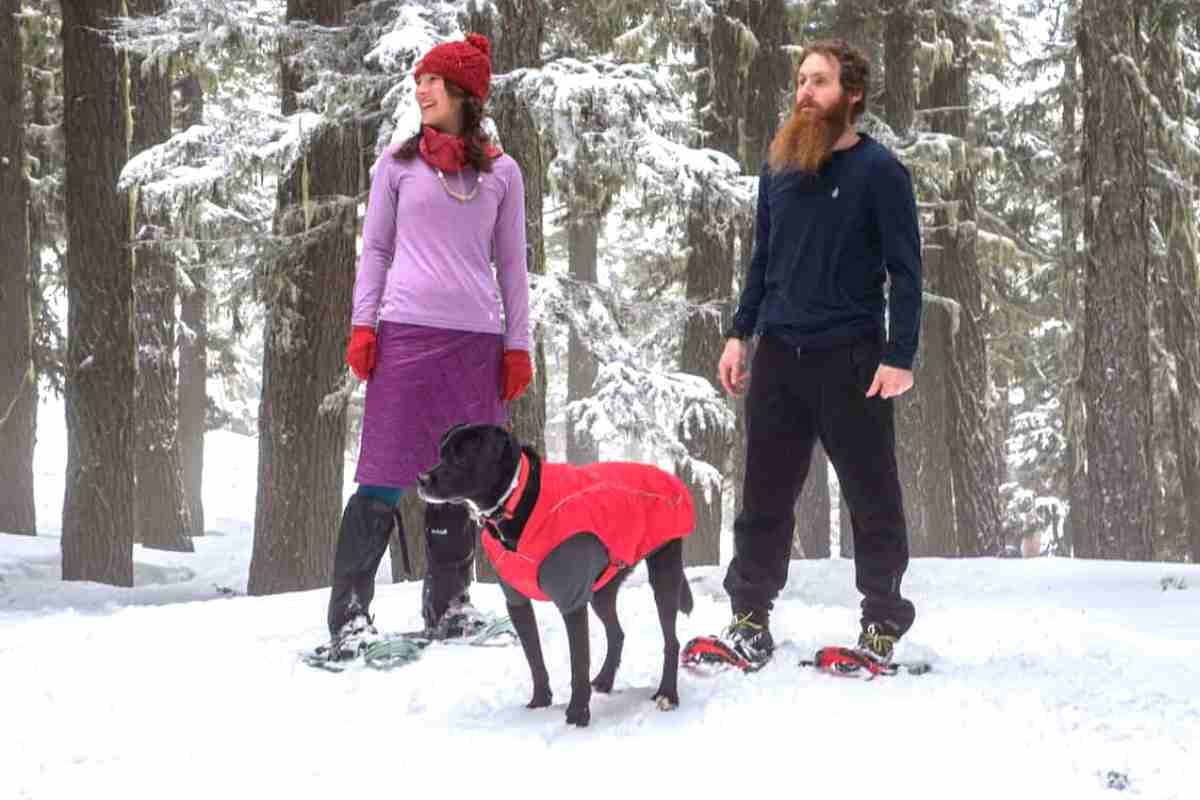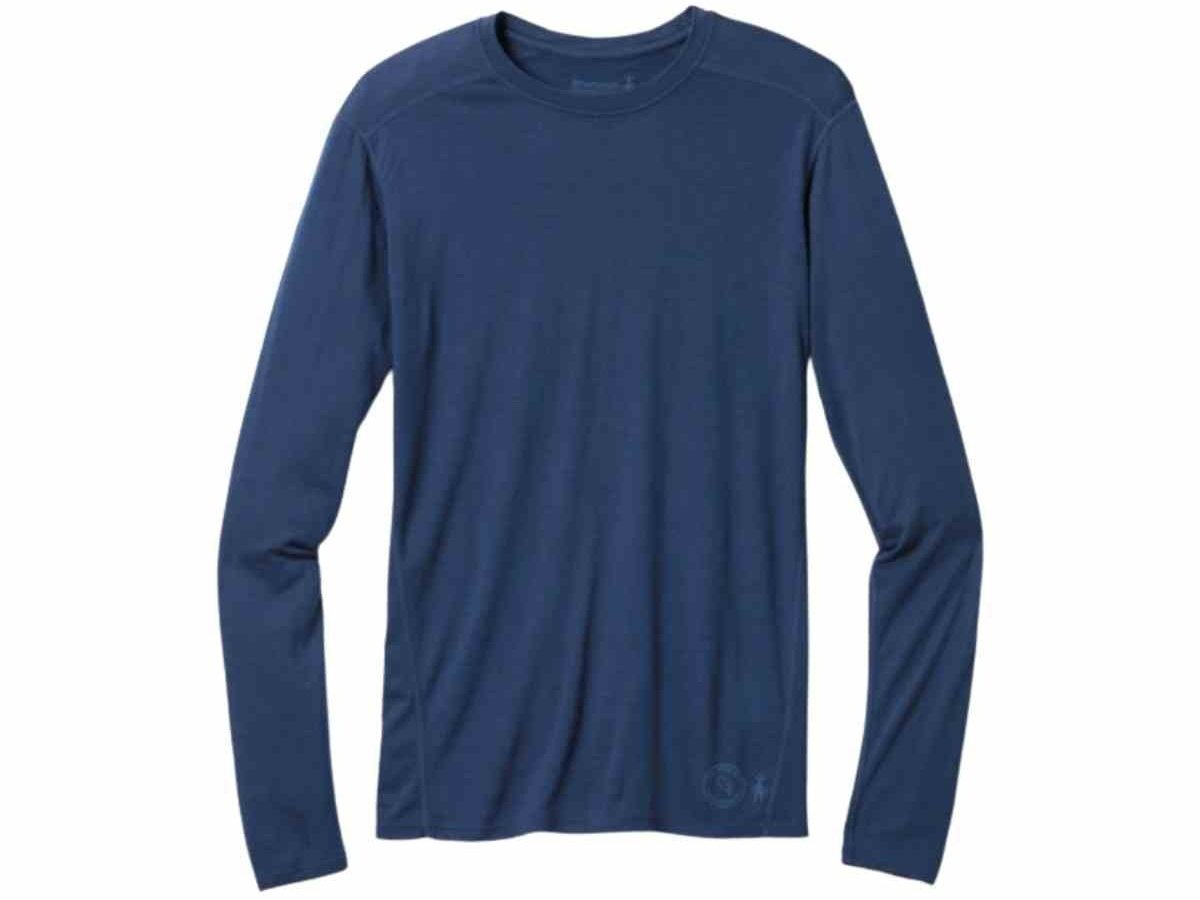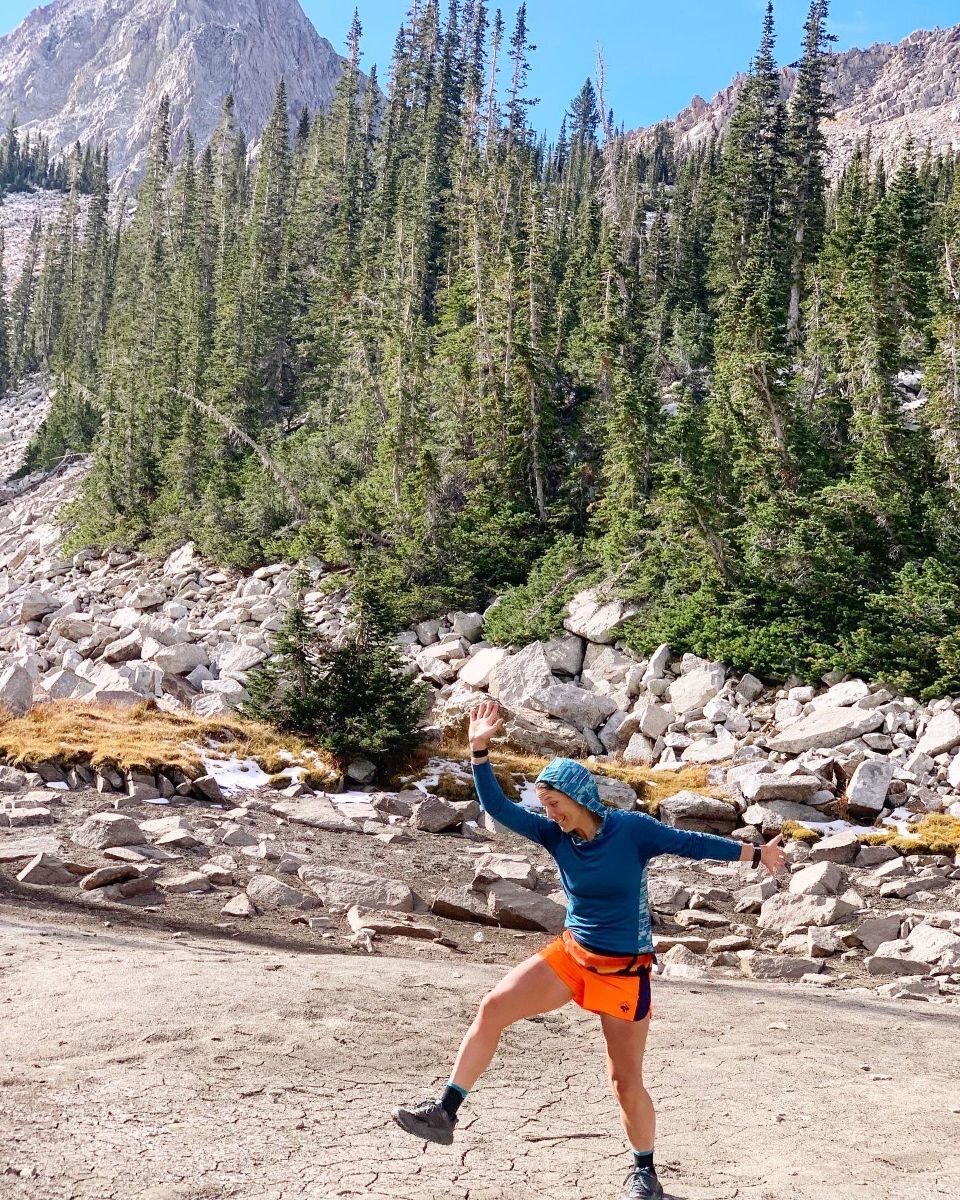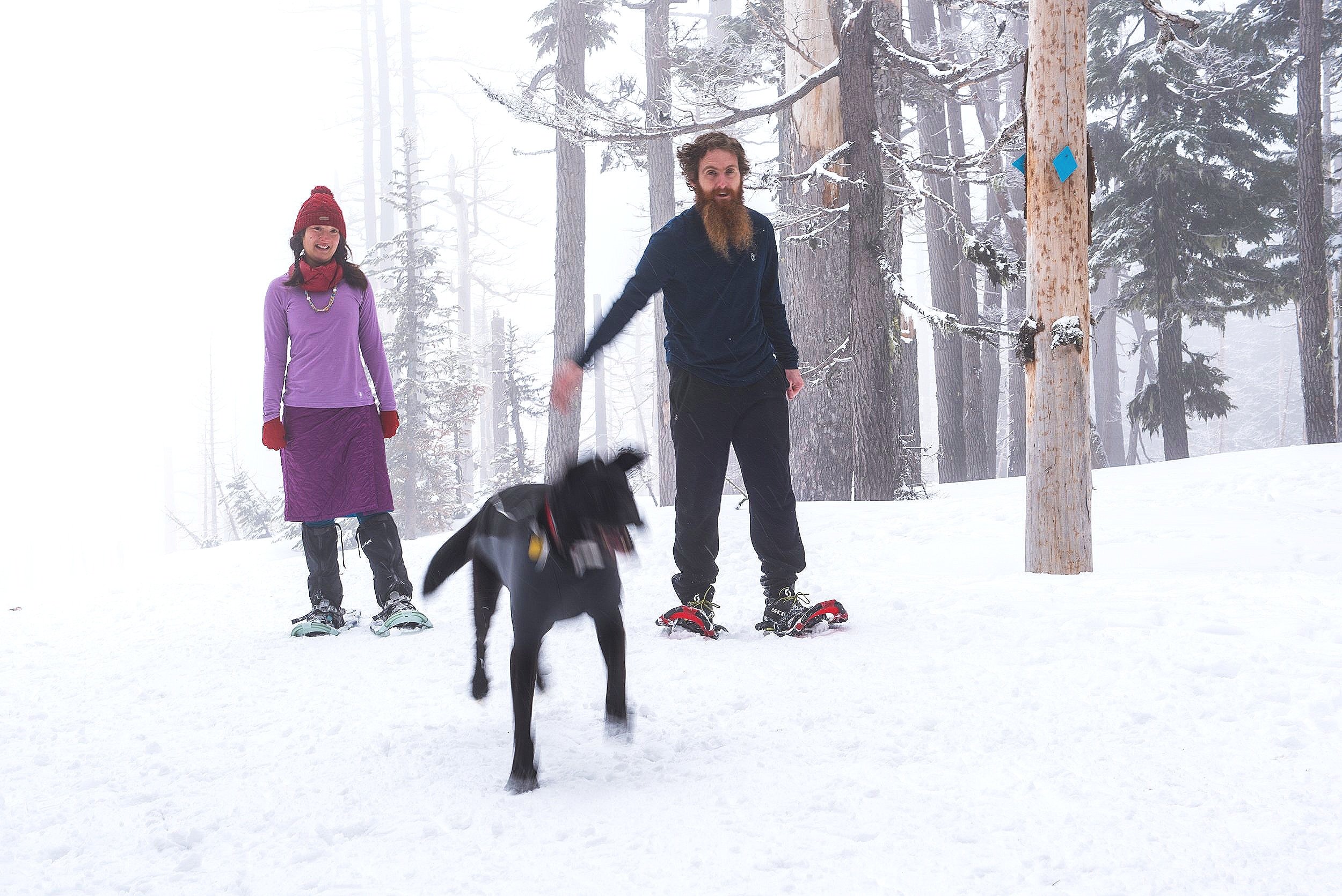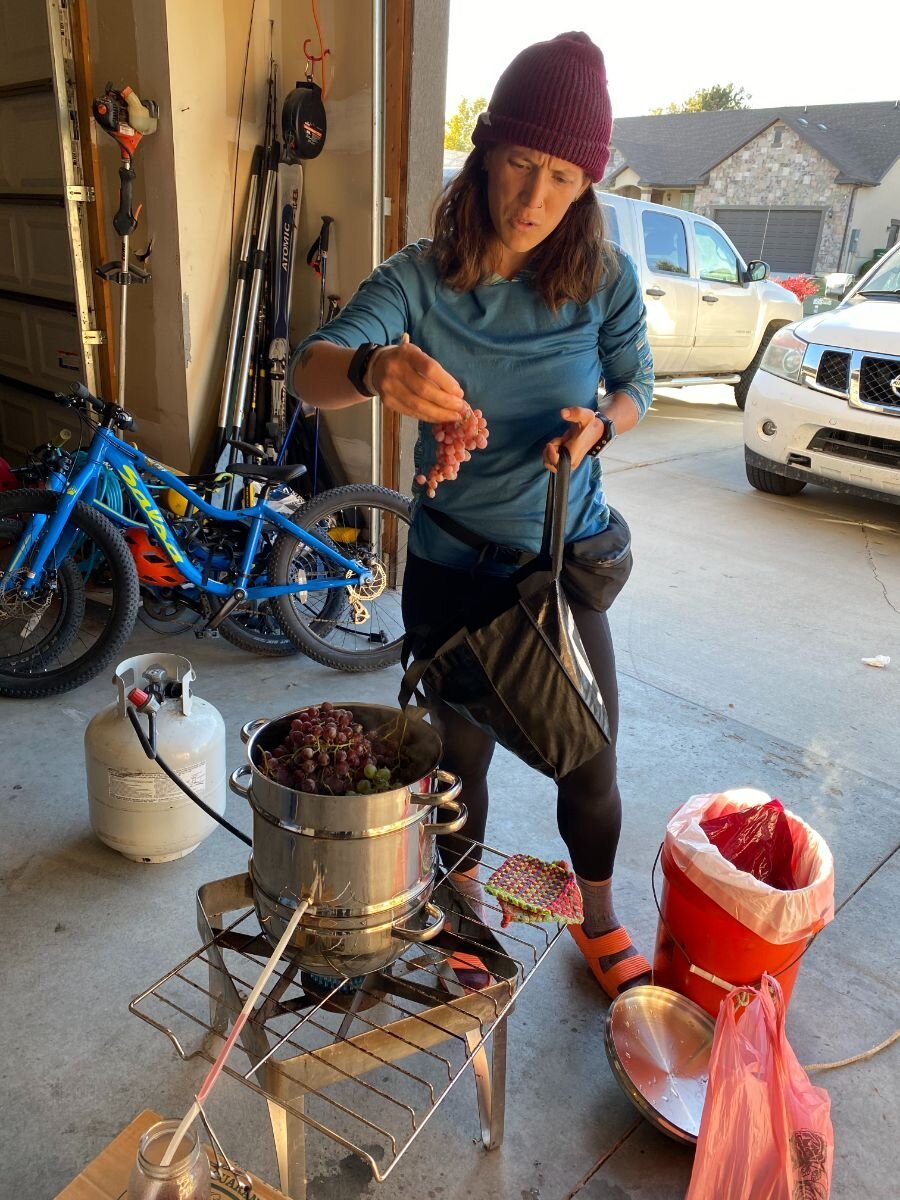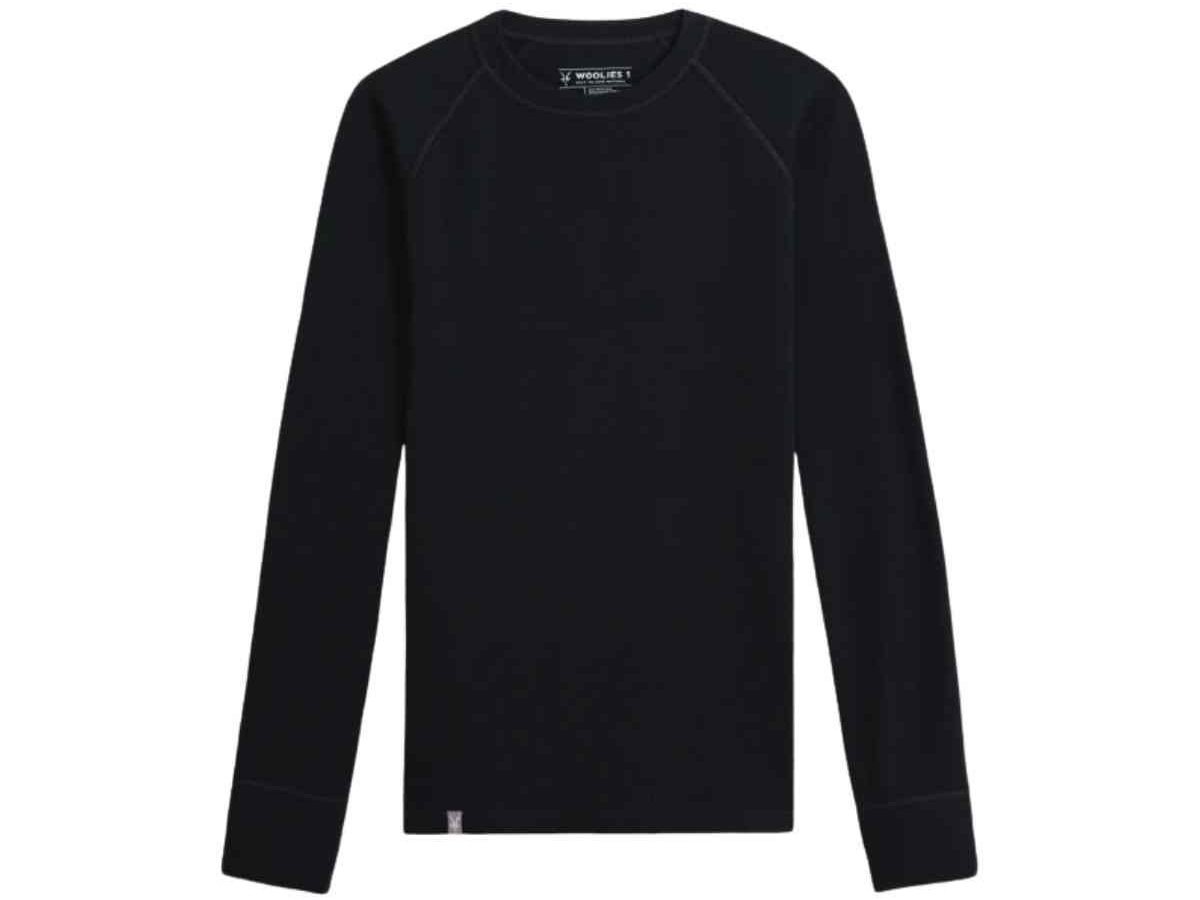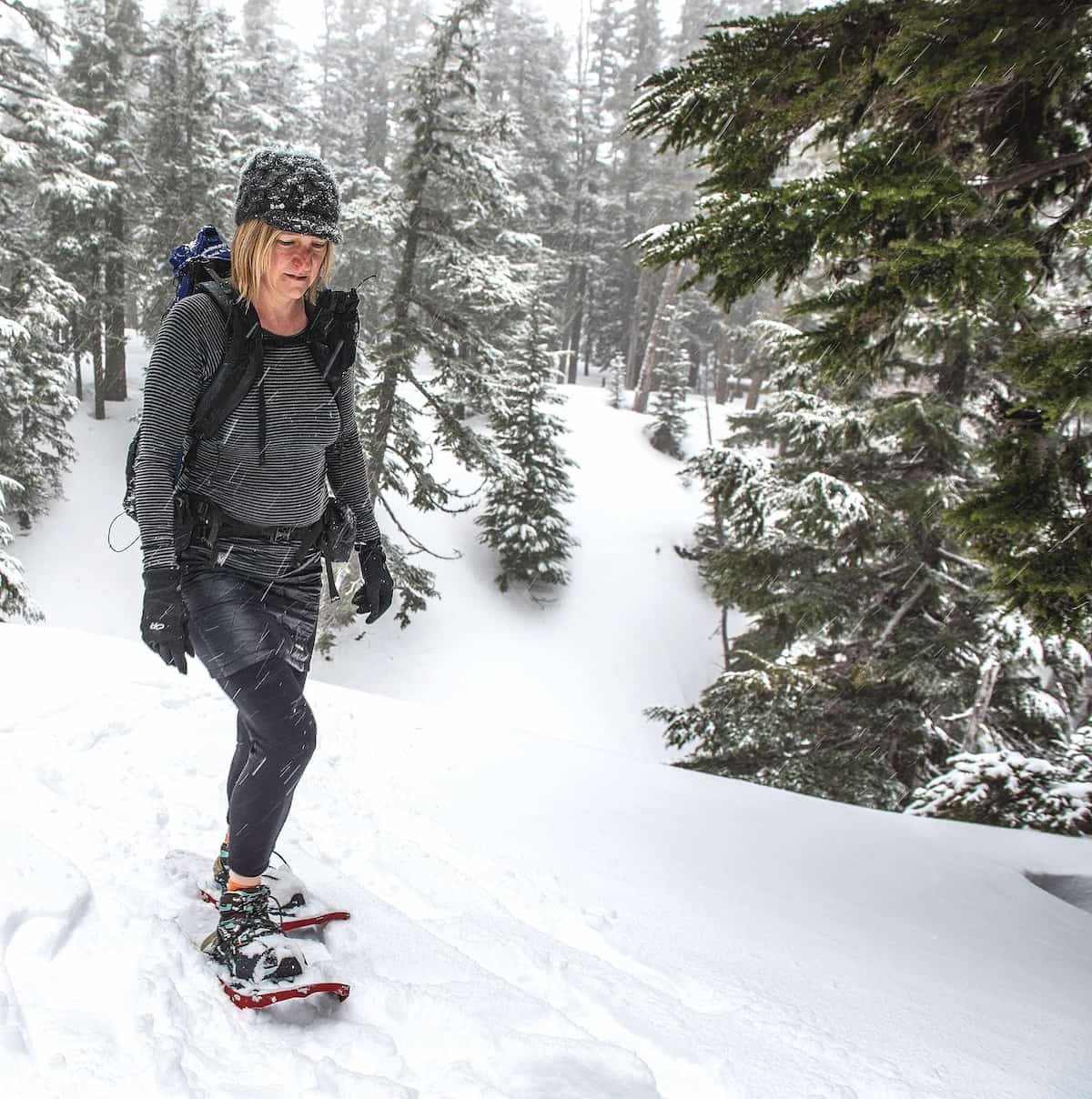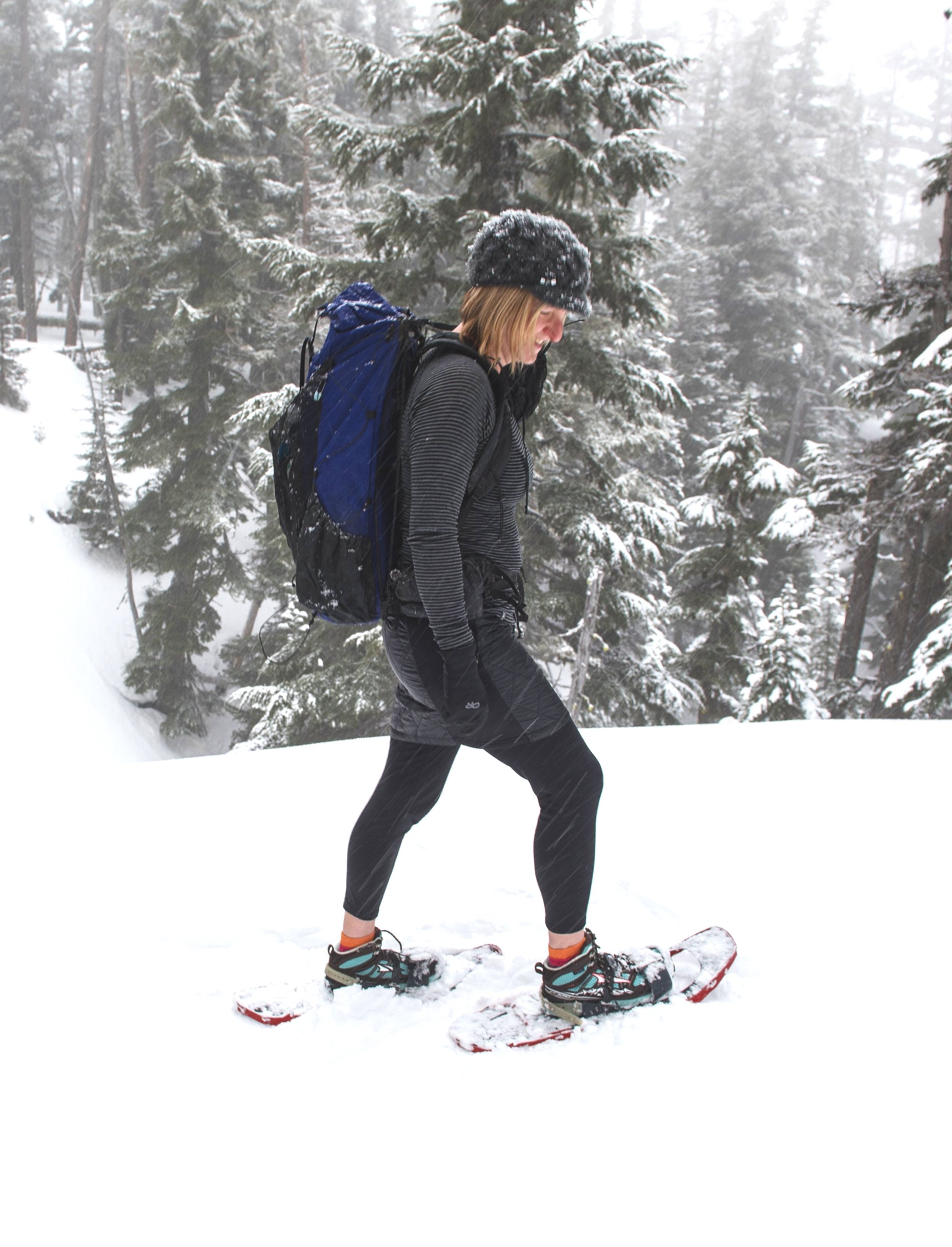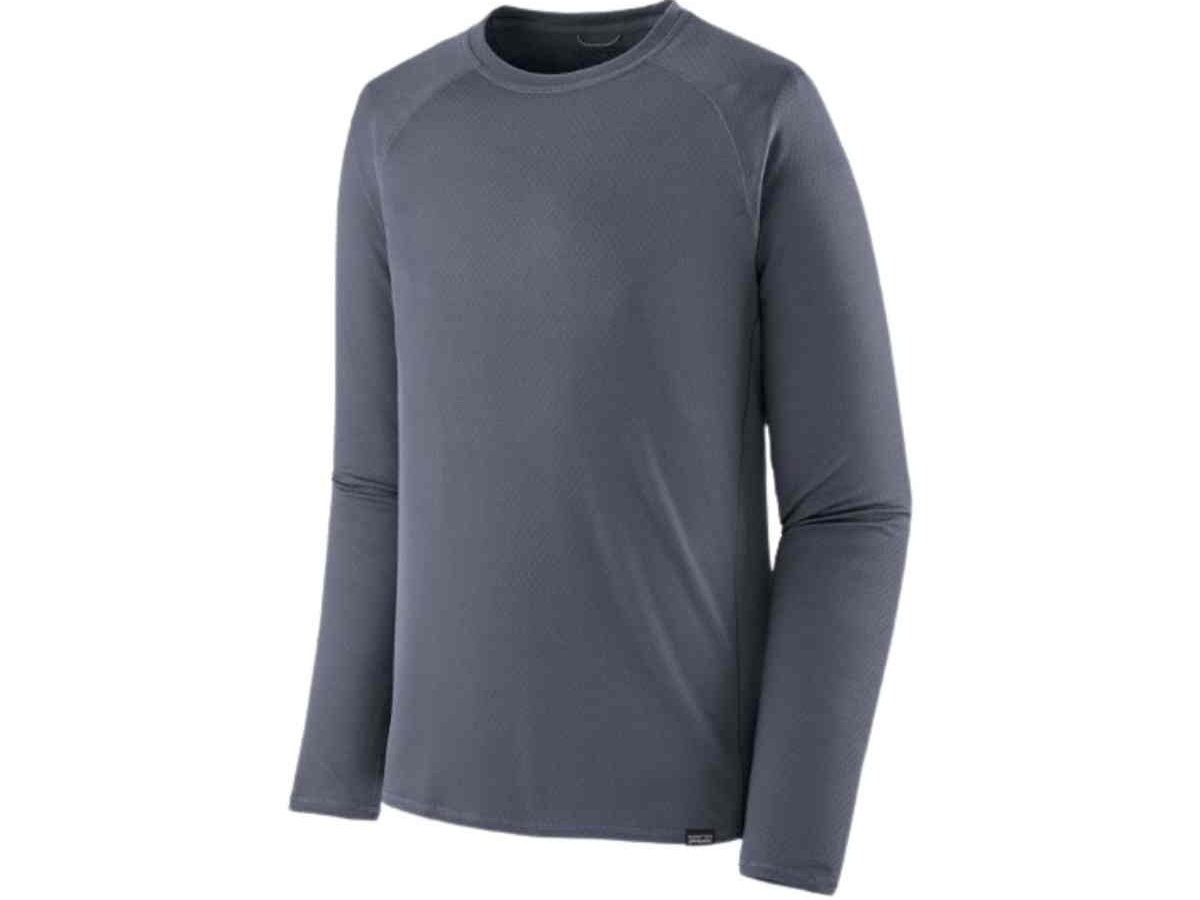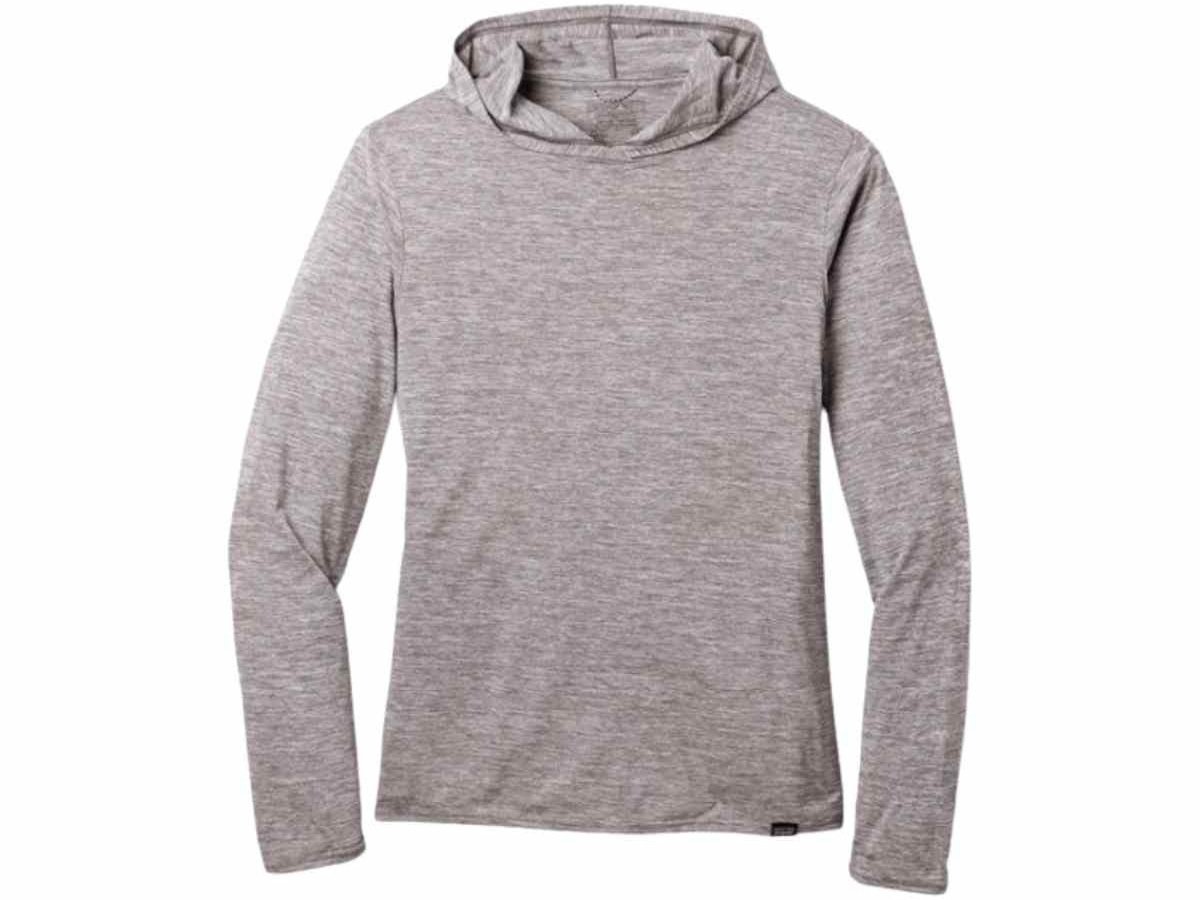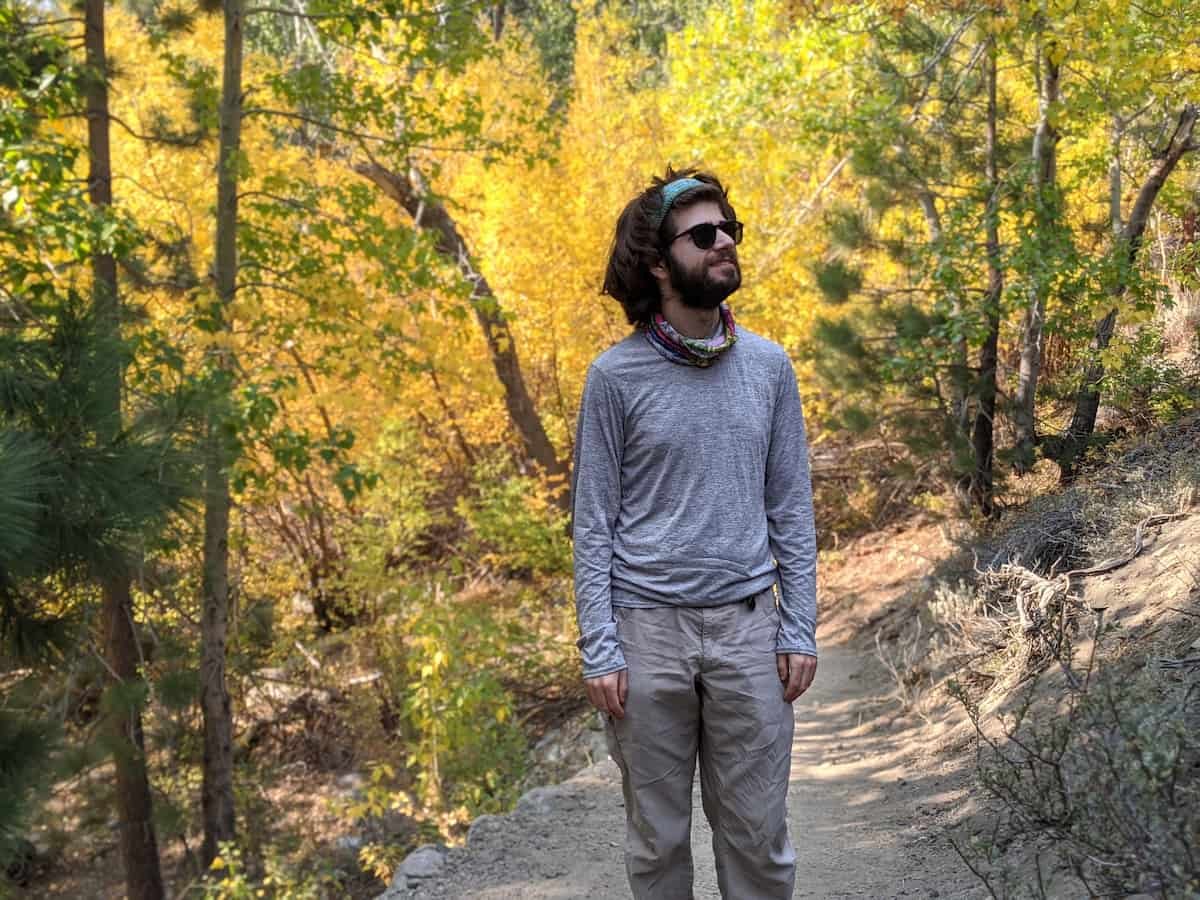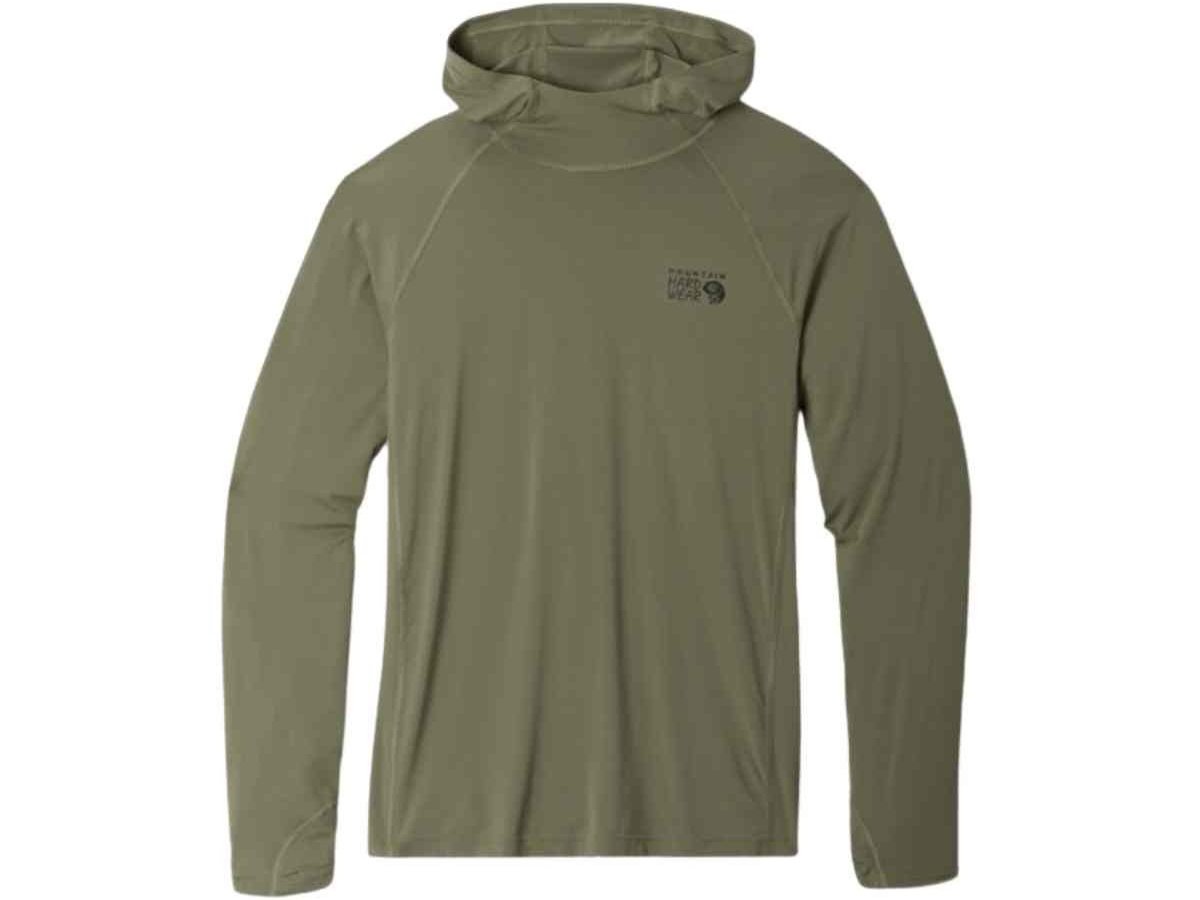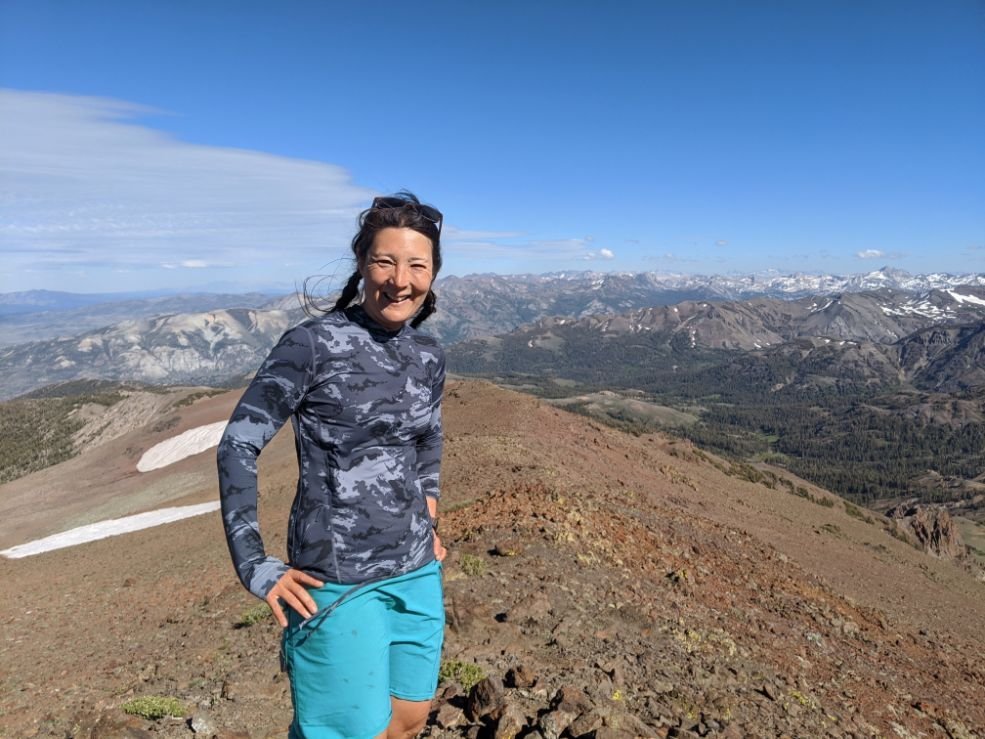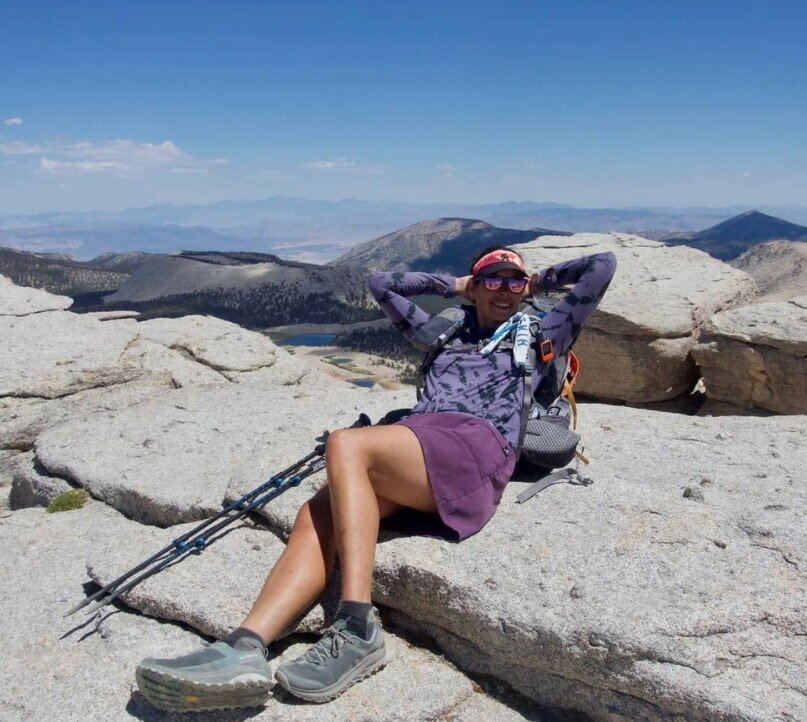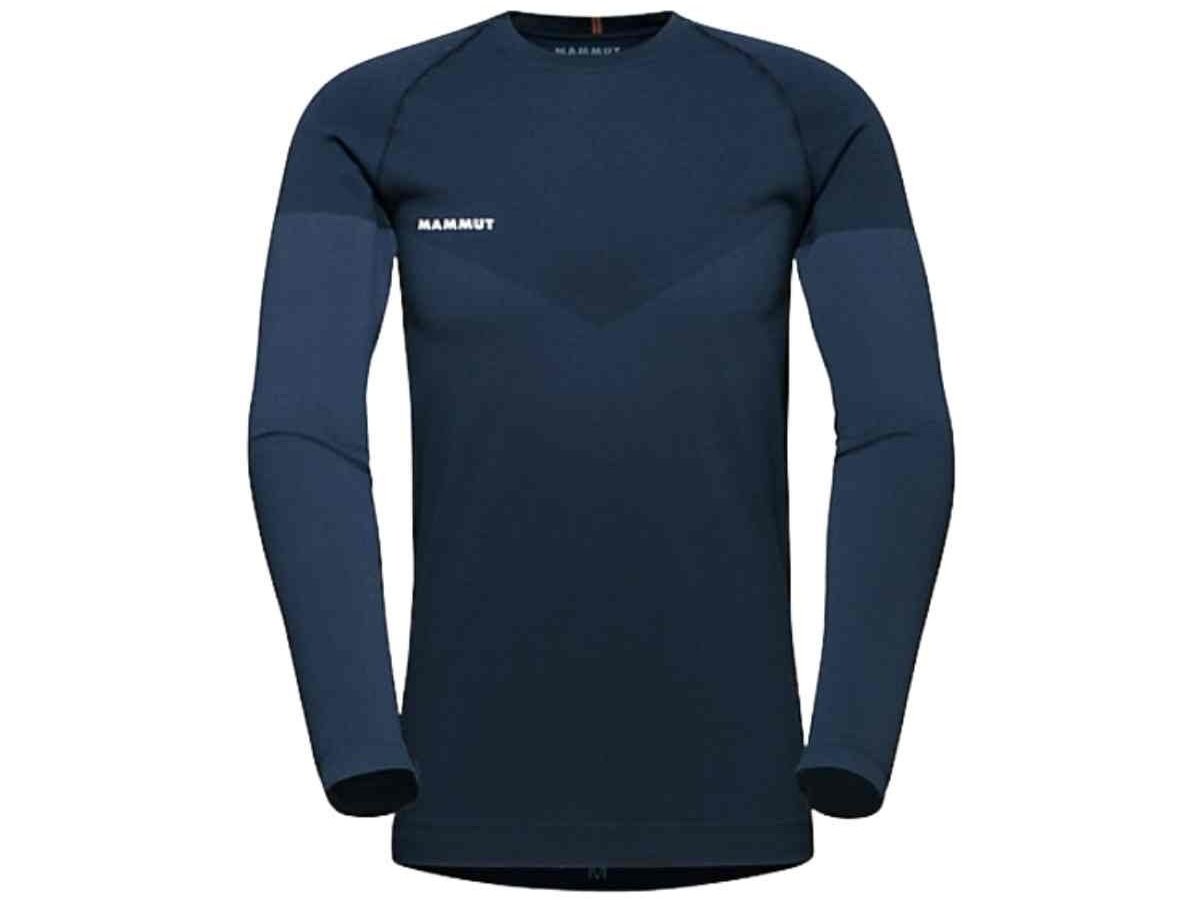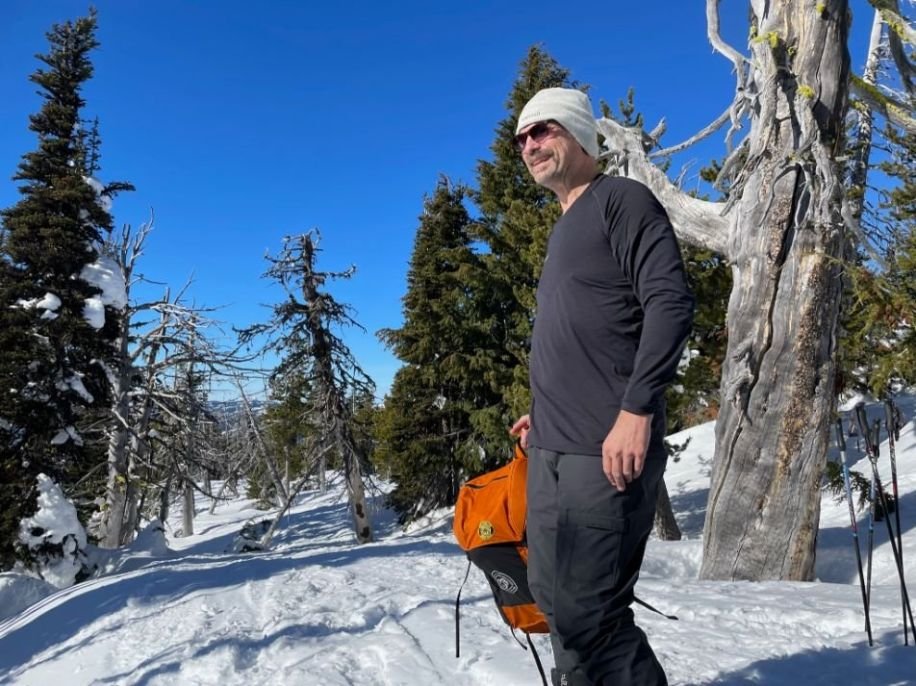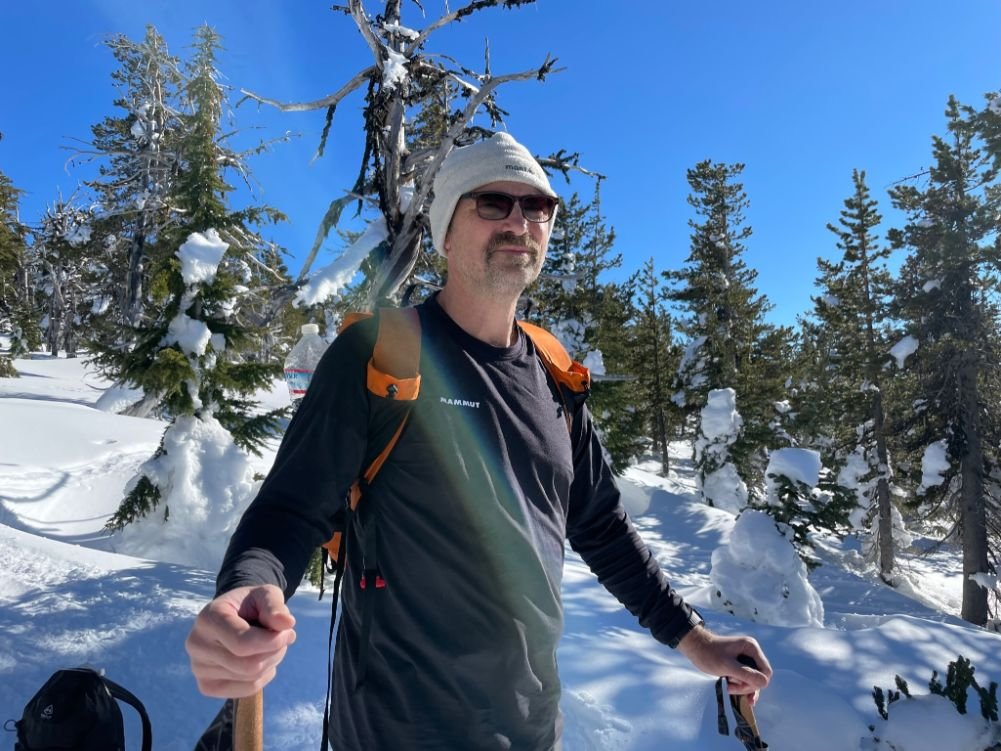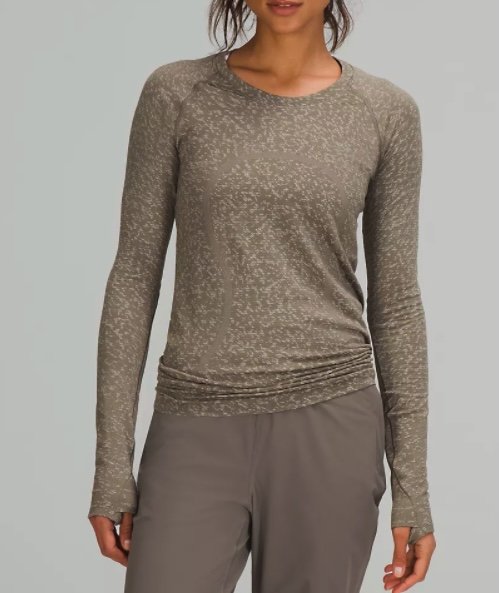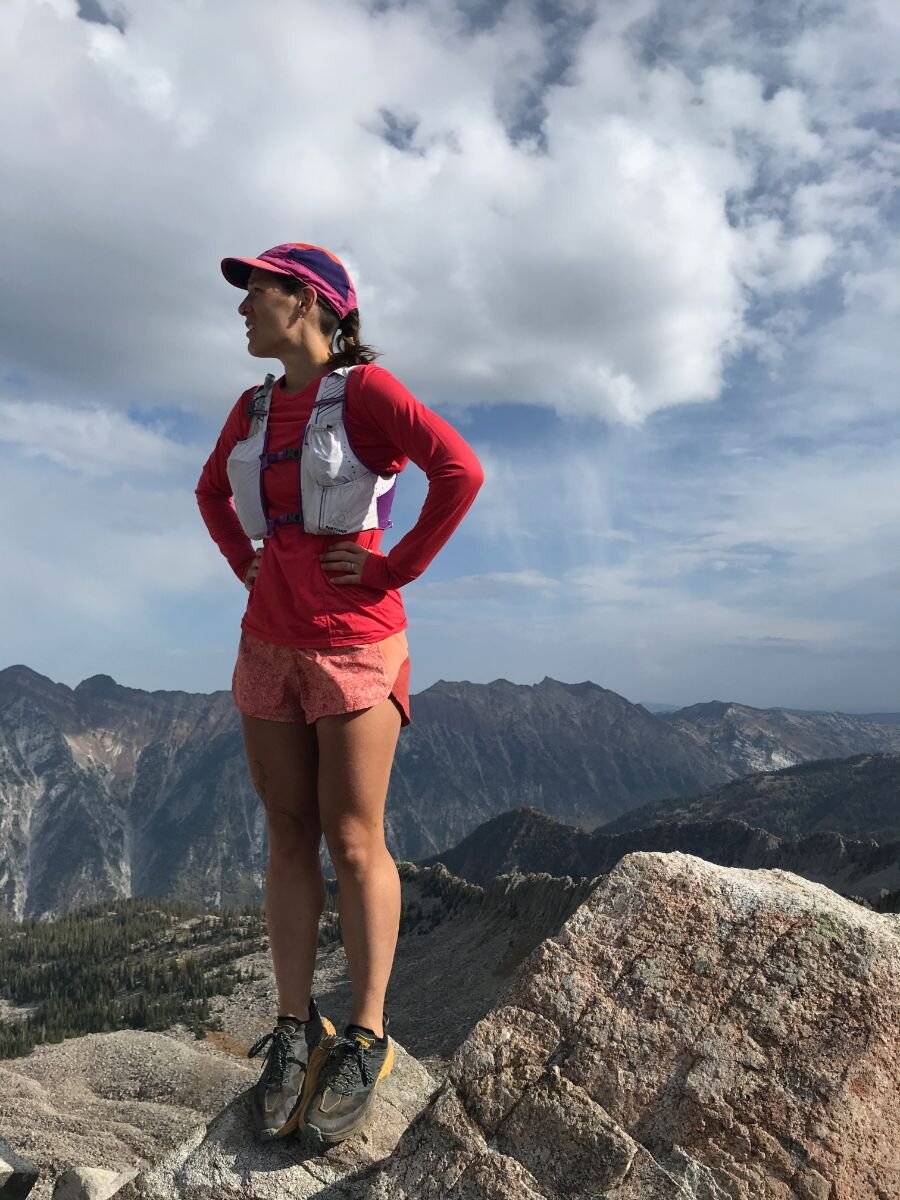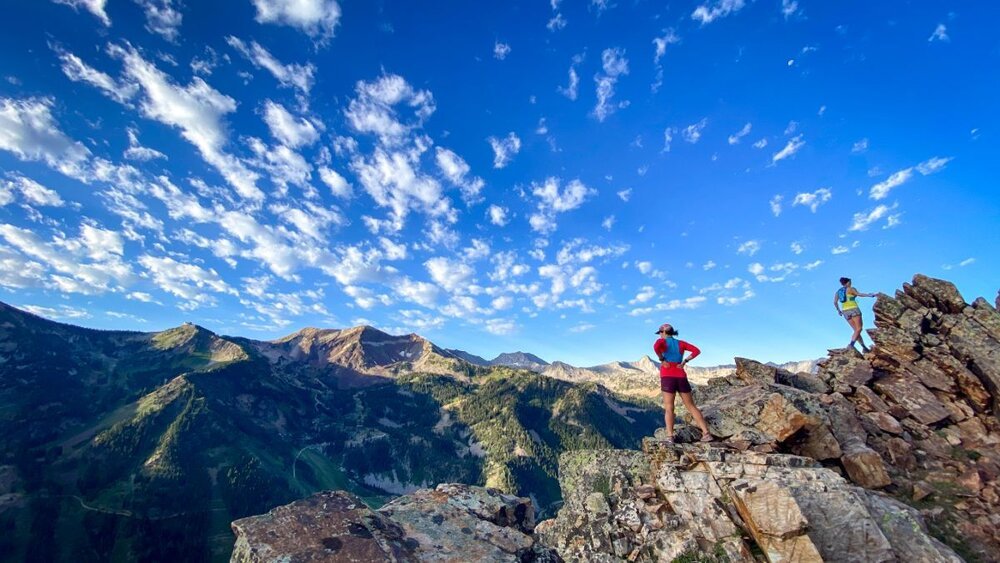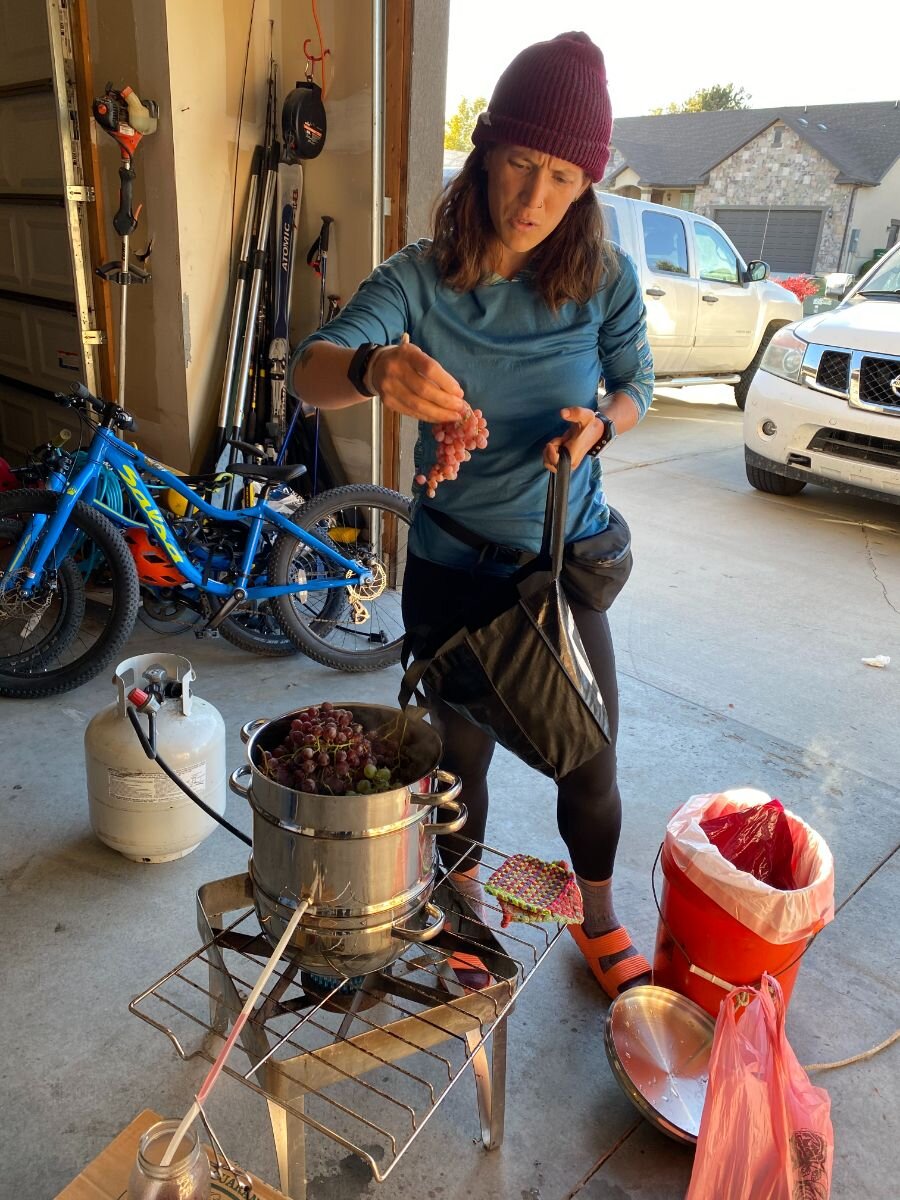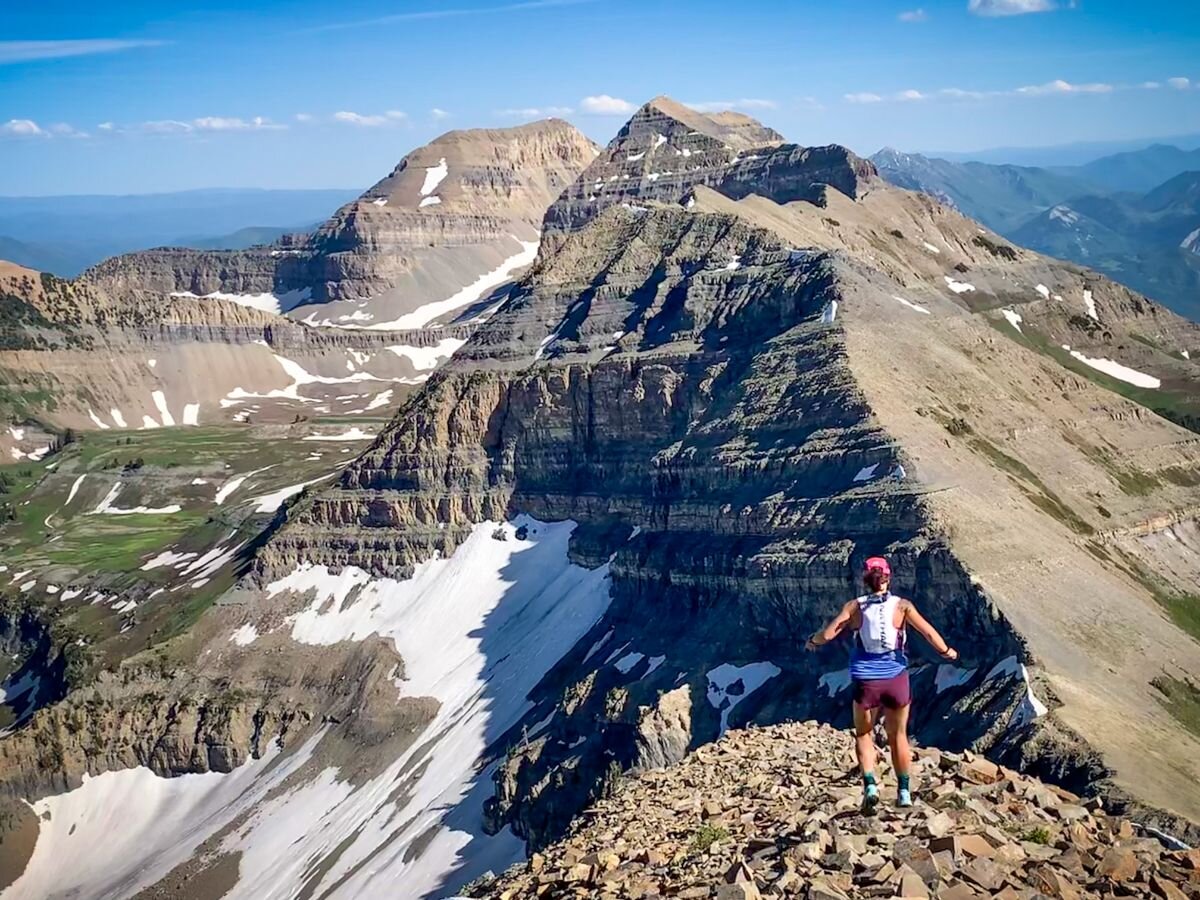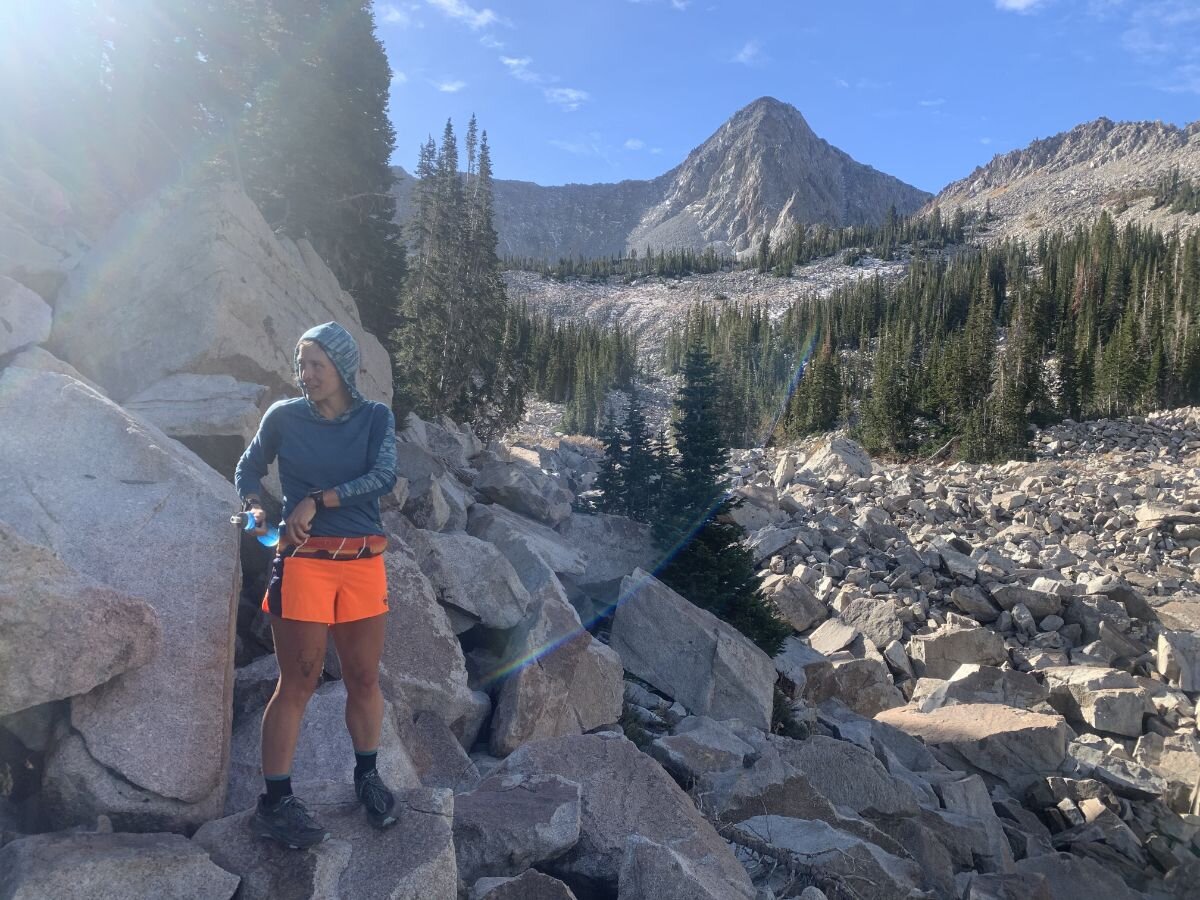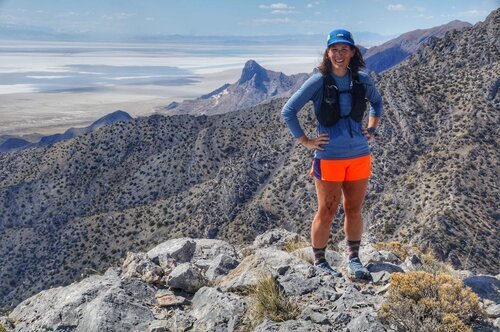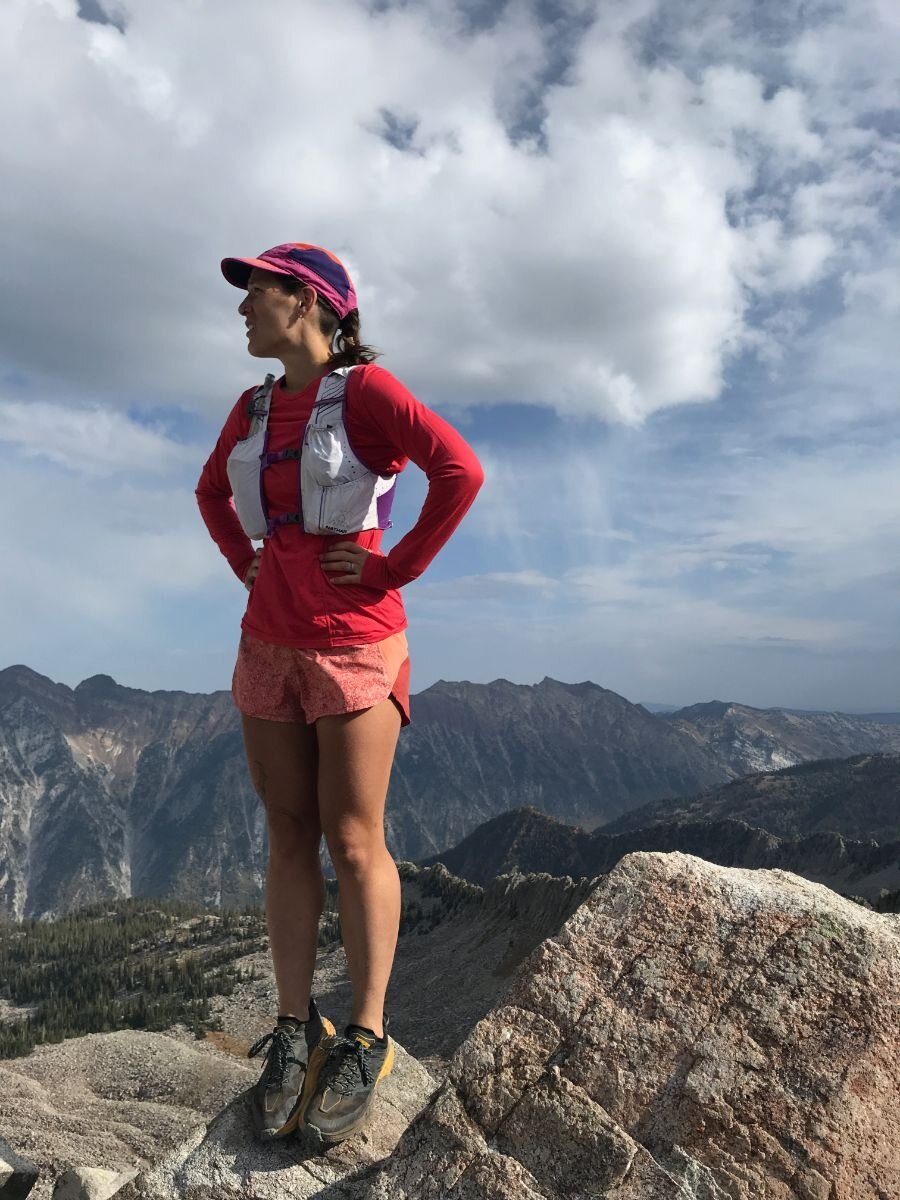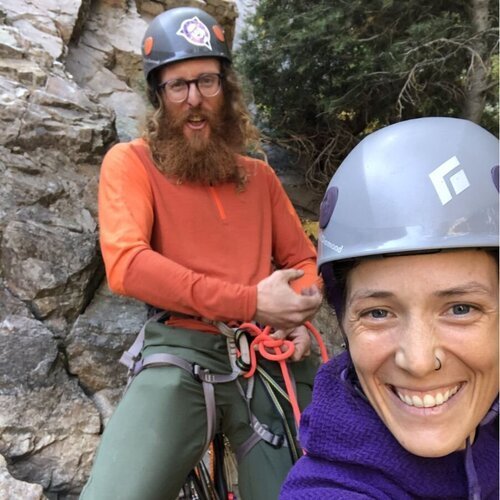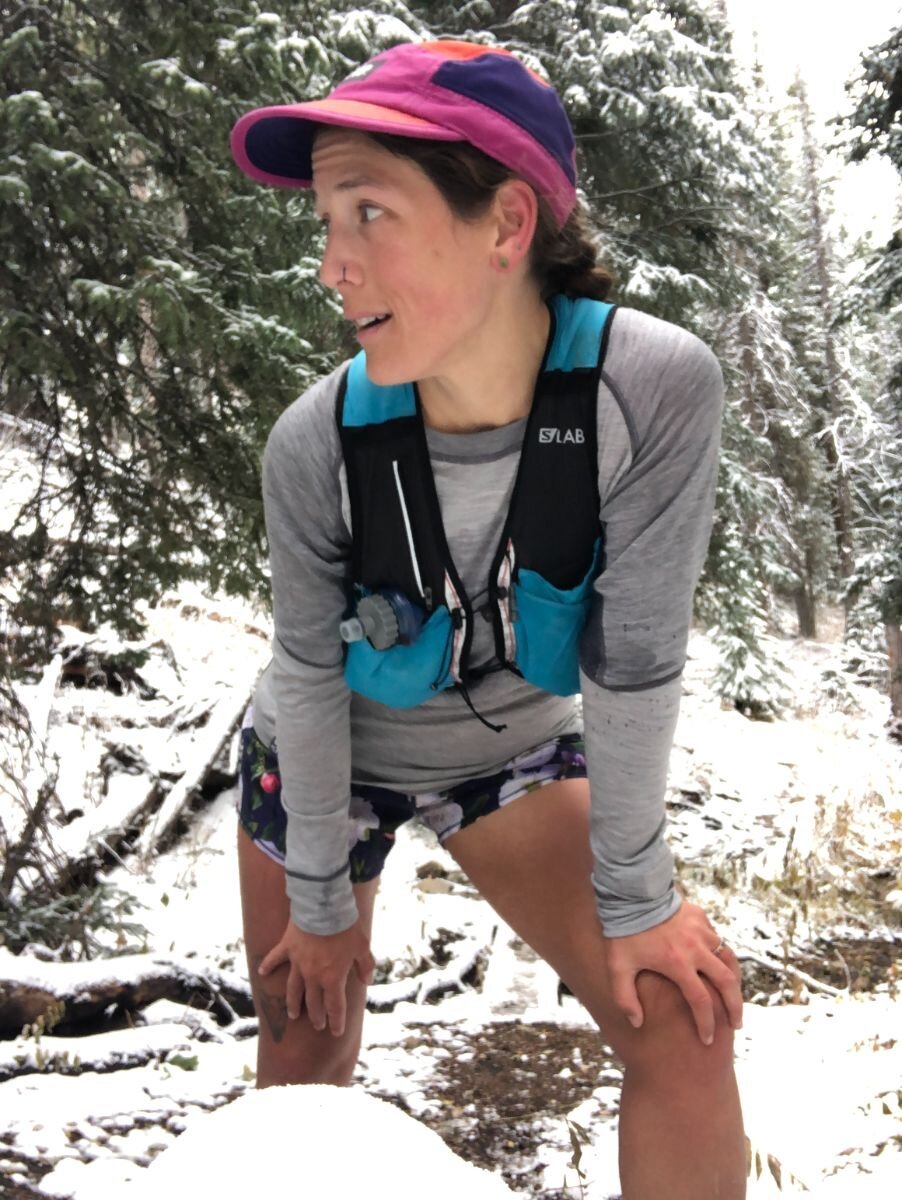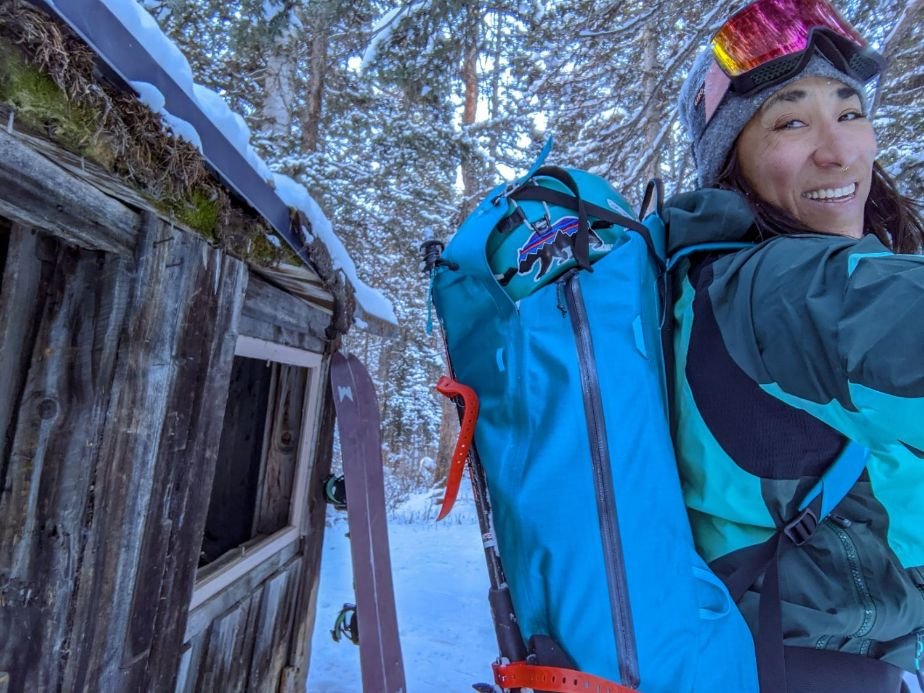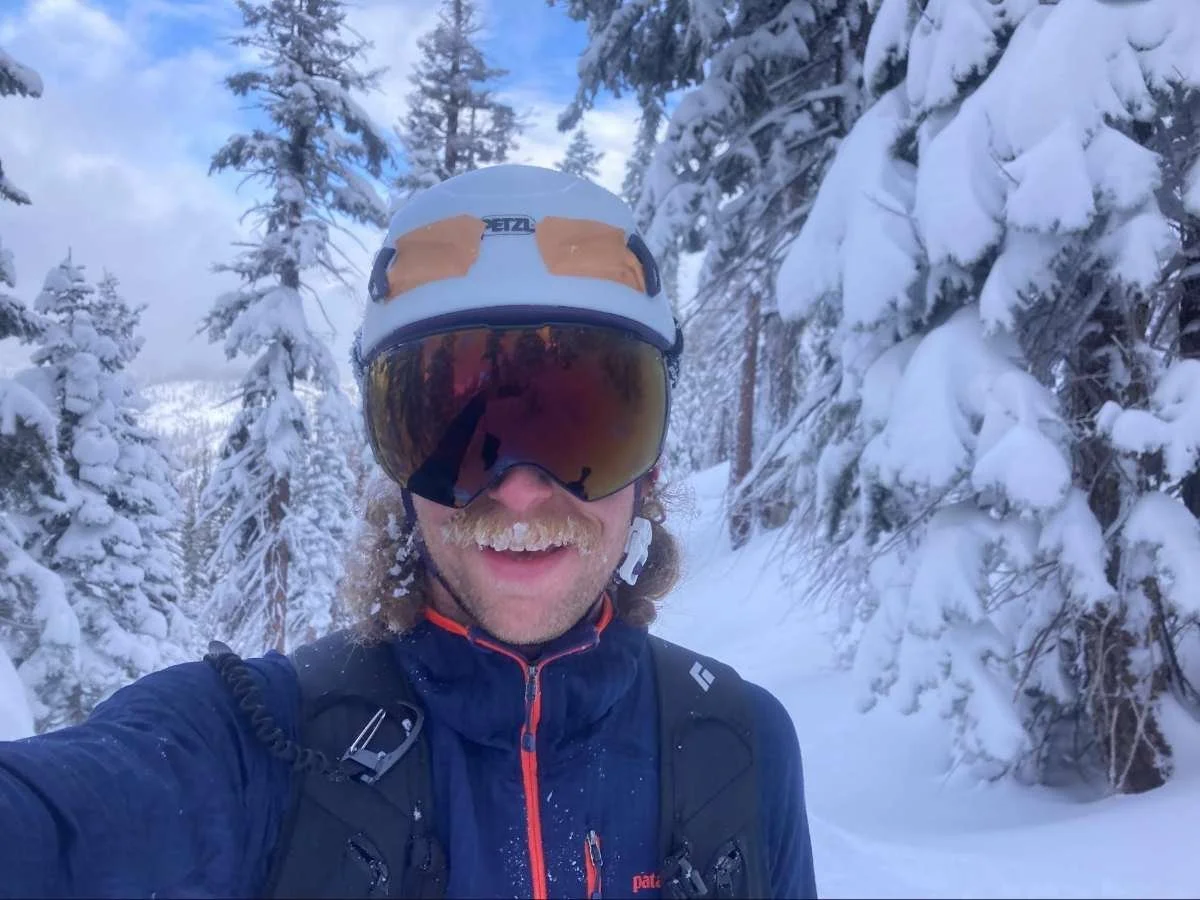Best Base Layers of 2024
THE BEST LIGHTWEIGHT AND MIDWEIGHT WoMEN’S AND MEN’S BASE LAYERS
Published October 15, 2023
Home > Gear Reviews > Apparel
To find the best base layers, we considered 75 of the top-rated lightweight, midweight, and heavyweight men’s and women’s tops. Base layers should fit well and be comfortable and durable enough to last through constant use over many seasons. We tested dozens of base layer tops for four years – hiking, skiing, backpacking, running, and watching hockey games and feeding cold weather bonfires.
Our half dozen testers put these base layers to work from a 27-hour ultra run in the Wasatch mountains of Utah to thru-hikes of the Arizona Trail, Oregon Desert Trail, and Iceland. Our testing led to winners for the best base layers for warmth, sweat-wicking, and odor control.
We found the best base layers for extreme performance and versatility on and off the mountain with durability that will last for years. We award base layers that will suit many outdoor activities and types of outdoor users – from merino to synthetic, budget choices to premium–available in various sizes.
This story may contain affiliate links, which help fund our website. When you click on the links to purchase gear, we may get a commission. This allows us to create reader-supported objective gear reviews — without costing you an extra cent. Thank you for supporting our work and mission of outdoor coverage for every body! Learn more.
Base Layer Comparison Tables
Women’s Base Layers
| WOMEN'S BASE LAYER | TREELINE AWARD | MSRP | CATEGORY | SIZES | FIT | FABRIC | THUMB LOOP? |
|---|---|---|---|---|---|---|---|
| Smartwool Classic All Season | Best Overall Read why |
$90 | Lightweight | XS-3X | Slim | 88% wool, 12% nylon | No |
| Smartwool Classic Thermal Merino | Best Heavyweight Read why |
$115 | Midweight | XS-3X | Slim | 100% merino wool | No |
| Ibex Woolies 2 | Best Merino Read why |
$135 | Midweight | XS-XL | Slim | 100% merino | Yes |
| Patagonia Capilene Midweight Crew | Best for Running Read why |
$79 | Midweight | XXS-XXL | Slim | 100% polyester (either 50% or 100% recycled) | Yes |
| Patagonia Capilene Cool Daily Hoodie | Best for Hiking Read why |
$65 | Lightweight | XS-XXL | Regular | 100% recycled polyester | No |
Men’s Base Layers
| MEN'S BASE LAYER | TREELINE AWARD | MSRP | CATEGORY | SIZES | FIT | FABRIC | THUMB LOOPS? |
|---|---|---|---|---|---|---|---|
| Smartwool Classic All-Season Merino | Best Overall Read why |
$90 | Lightweight | S-XXL | Slim | 88% merino wool, 12% nylon | No |
| Smartwool Classic Thermal Merino | Best Heavyweight Read why |
$115 | Midweight | S-XXL | Slim | 100% merino | No |
| Ibex Woolies 2 | Best Merino Read why |
$135 | Midweight | S-XXL | Slim | 100% merino | Yes |
| Patagonia Capilene Midweight Crew | Best for Running Read why |
$79 | Midweight | S-XXXL | Slim | 100% polyester | Yes |
| Patagonia Capilene Cool Daily Hoodie | Best for Hiking Read why |
$65 | Lightweight | XS-XXXL | Regular | 100% recycled polyester | No |
*See our Deals Page for discounts and sales on products that win our awards.
For more of our favorite winter gear recommendations, see our most popular Gear Guide stories:
The Best Base Layers
The Best Overall Base Layer: Smartwool Classic All Season
Fabric: 88% merino wool, 12% nylon
Insulation Weight: Lightweight (150 g/m2)
Weight: 4.7 oz (women's)
Fit: Slim
Features: Available as a quarter zip
What we liked: Versatility, durability, most inclusive sizing, looks good on most people, color and pattern availability, reasonably priced
What we didn't like: Not as technical as some base layers, more technical base layers may vent or dry more quickly
The Smartwool Merino 150 is the best overall base layer because it excels at checking all the boxes we were looking for in a base layer. It's warm, breathes well, is durable, wicks away sweat, stays warm when wet, and looks as good at home as it does outdoors. It feels cozy, regulates temperature well, and is odor-resistant. We found it both comfortable and durable–it’s the only wool layer that didn’t show any signs of wear after four months of hard use on runs. Of all those we tested, it worked best for just about any activity—including après gatherings—and never held an odor.
If you're only going to buy one base layer, we think the All Season is the most versatile. There's a lot of merino base layers out there, but this one balanced all the features we wanted the best, with a fair price. The Smartwool 150 is a versatile and flattering merino base layer that performs as well on the trail as it does with jeans or leggings.
COMPARE PRICES ON THE SMARTWOOL CLASSIC ALL SEASON MERINO BASE LAYER
MEN'S
WOMEN'S
Trail run and outdoor dance party in the Smartwool base layer. Photo by Chelsea Woodbury.
Smartwool has been making a version of this layer for almost three decades. Each iteration has made it better and better.
Our Treeline Review testers wore the Smartwool Classic on ultra-runs in Utah, thru-hikes of the Pacific Crest Trail, Appalachian Trail, and Pacific Northwest Trail, for winter outdoor yoga classes in the 30s, skiing in Colorado, hanging out in cabins and ski huts playing board games, and getting drinks with friends after a day outdoors.
Try as we might, we didn’t find any technical drawbacks to the Smartwool Merino 150.
We like that it has the best size inclusivity of any brand. It also has options for people who want a crew or zip neck. Unlike most base layers that are only available in gray and black, which can show dirt or overheat in the sun, the Smartwool Classic comes in many colors and patterns.
Liz snowshoeing in the Smartwool All Season classic on a snowy day on Mt. Hood.
The Smartwool is one of the lightest weight layers we tested. In testing, that lighter-weight fabric works great for fall hiking and running. But during winter, we found it to be a great asset in our layering system along with a mid-layer, outer layer like a down jacket or synthetic insulating jacket, and ski jackets and hard shells.
The Smartwool Classic wicks moisture, dries quickly, and breathes well. It's tagless, so reduces rubbing during runs and backpacking. Merino regulates temperature well, so it can handle fluctuating temperatures from cool mornings to afternoon sun. Most users found it incredibly soft and itch-free, but it wasn't quite as soft as the Icebreaker merino. Still, for a price that rivals many of the smaller budget brands we considered, the quality is undeniable.
Smartwool’s merino wool is designed to not have the scratchy or itchiness of traditional wool garments. In fact, they’re as comfortable for use at home or doing chores as they are for technical outdoor pursuits. Photo by Tricia Hunninghake.
It’s worth noting that Smartwool fabrics are among the easiest to care for–especially for wool. They perfected that art early on with their hiking socks years before other brands were making wool that can go in the laundry.
Similarly, the Merino All Season is designed to go in a washer with regular detergents, whereas other base layers like those by Helly Hansen (which we didn’t test) recommend Wool Wash or BaseWash to preserve the fabric while cleaning. While we generally recommend line-drying all your base layers to preserve the integrity of the fabric, you can toss the Merino 150 in the dryer on low heat.
The cut on the Smartwool All Season is ideal for wearing a backpack, while also looking flattering. It's got Raglan sleeves so it has plenty of shoulder mobility–we had no trouble taking yoga classes in this top. and shoulder seams that are off set (so aren't right on top of your shoulder while backpacking). It's also got flat lock seams. These both reduce the chance of chafing.
The Smartwool Classic won high praise from Outdoor Gear Lab, Switchback Travel, Clever Hiker, Adventure Junkies, Greenbelly, and Wirecutter (see Sources).
For 2023, it is made with ZQ-certified merino wool to ensure environmental, social and economic sustainability while safeguarding animal welfare. In addition to traditional colorways, it’s also available with plant dyes, which we love.
In the last few years, Smartwool has become among the best outdoor brands at size inclusivity. The classic version of the Merino 150 is available in 1X to 3X, and the same is true for the quarter zip. It’s also a winner in our Plus Size Outdoor Clothing and Plus Size Winter Outdoor Clothing guides.
Best Heavyweight Base layer for Extreme Cold: Smartwool Classic Thermal
Fabric: 100% merino
Insulation Weight: Midweight (250 g/m2)
Weight: 9.74 oz (men's), 7.69 oz (women's)
Fit: Slim
Features: Available as a quarter zip
What we liked: Warmth, versatility, durability, most inclusive sizing, looks good on most people, color and pattern availability, reasonably priced
What we didn't like: Not as technical as some base layers, more technical base layers may vent or dry more quickly
The Smartwool Classic Thermal Merino Base Layer is our winner for best base layer for extreme cold. It's got everything we love about the Smartwool All Season, but is the best heavyweight base layer for versatility, fit and comfort, quality and durability, and warmth.
The Smartwool Classic Thermal, like the Smartwool All Season, is ideal for wearing a backpack, while also looking flattering. It's got a Raglan sleeve that has lots of mobility for skiing and hiking with trekking poles. Shoulder seams that are off set (so aren't right on top of your shoulder while wearing a pack). It's also got flat lock seams. These both reduce the chance of chafing.
COMPARE PRICES ON THE SMARTWOOL CLASSIC THERMAL MERINO BASE LAYER
MEN'S
WOMEN'S
As with the Smartwool Classic All Season Base Layer, the Thermal weight is also available as a half-zip for added temperature control. The Smartwool Classic Thermal is also beloved by Outdoor Gear Lab, Switchback Travel, REI, and Greenbelly.
Another thing we liked about the Smartwool Thermal is that it's available in some of the most inclusive sizes of any base layer brand, with women’s available up to 3X. The Smartwool 250 was one of our favorites in our Plus Size Outdoor Clothing and Plus Size Winter Outdoor Clothing guides.
Ultimately, if summer is your primary season for outdoor fun and you’d like a base layer that works year-round, the Smartwool Merino All Season is a great option. But if you need a heavyweight layer because you live or travel to colder places, this checks all the boxes at a reasonable price. We also like this heavier base layer for lower output activities like winter bonfires and watching hockey and football games.
Best Merino Wool Baselayer: Ibex Woolies 2
Fabric: 100% merino
Insulation Weight: Midweight (240 g/m2)
Fit: Slim
Features: Crew only
What we liked: Softness, comfort, fit, sleeves and torso that are long enough, performance and good looking, stylish
What we didn't like: Not as technical as other base layers, not sold at most retailers
The best merino wool base layer we tested is the Ibex Woolies 2. Both Liz and Naomi tested this base layer seven years ago, and both of them consistently reach for that same shirt at least once a week. Since then, Ibex has gone through a major rebranding, but for 2023, it has re-released the Woolies. We are overjoyed. We're thrilled to report it has all the same great features we loved with the previous version.
We tested several 100% merino base layers, and the Woolies won our hearts for its comfort, fit, and stylish looks. What makes it different than other merino base layers is its 17.5-micron merino ribbed knit. Microns are used to judge the thickness of the wool fiber, with 15 being about as low as it goes.
The lower the number, generally the less itch. The fabric on the Woolies 2 is ultra-soft with itch-free wool. Icebreaker also uses a similar wool micron, but most other brands aren't transparent about those numbers.
IBEX WOOLIES 2 MERINO BASE LAYER
MEN'S
WOMEN'S
Treeline Review editor Naomi Hudetz snowshoeing in the Ibex Woolies.
The design of the torso and sleeves are long enough to protect sensitive-to-cold areas like wrists and the small of the back. It's got a flattering cut that works well whether you're on trail or at the lodge. And it's reasonably priced for merino wool.
The soft merino wool of the Ibex Woolies 1 Crew makes it feel like a luxury upgrade, but currently it’s only a little more expensive than our top winner, the Smartwool Classic All-Season. Our testers found the fabric softer and less itchy than that of the Smartwool top.
The Ibex Woolies has longer sleeves and a longer torso, making it ideal for carrying with a backpack and wearing with gloves.
We loved that the Ibex Woolies 2 had one of the longest torsos of any base layer we tested, keeping the lower back nicely covered. The Woolies 1 Crew’s longer cut, ribbed pattern, and casual design make it just as suited for Colorado-style business meetings under a blazer as for hanging out with the family over the holidays.
The Woolies has a looser, sometimes baggy fit that stretches with wear, which in our tests sometimes required more care under backpack hip belts and climbing harnesses. While it totally works for active pursuits, it doesn't have the technical look of many of the other base layers we tested.
While the ribbed knitting makes it more comfortable for everyday use, it looks more like an outdoor-lifestyle piece than a top you would wear for extreme activities. That being said, we’ve worn it on backpacking trips.
The Ibex Woolies is more comfortable than most leisurewear. We think of the Ibex Woolies 2 as a work-hard-play-hard piece. It’s perfect for meetings in the morning and a mid-afternoon hike.
Best Base Layer for Running: PATAGONIA CAPILENE MIDWEIGHT Crew
Fabric: 100% recycled diamond-grid double knit polyester (bluesign certified)
Insulation Weight: Midweight
Fit: Slim
Features: Zip neck available
What we liked: Lasts a decade or more, recycled fabric with bluesign dying, wicks well, dries very fast, Fair Trade certified sewing, retains shape while wet, no pilling or wear signs, smooth surface slides nicely under a jacket.
What we didn't like: Not as flattering as some other base layers we tested
We love the Patagonia Capilene Midweight and think it shines as a running base layer. It's the best synthetic base layer out there, with decades of refinement and perfection. This synthetic base layer is versatile, suitable for wearing by itself or layering under a mid-layer. While there are less expensive synthetic base layers, the quality and durability (not to mention relative eco-friendliness) of the Capilene Midweight make it the best choice for synthetic.
In our testing, it was incredibly durable and wicks and breathes well, even during high-exertion activities. It is also bluesign-approved recycled polyester with Fair Trade Certified sewing.
COMPARE PRICES ON THE PATAGONIA CAPILENE MIDWEIGHT
MEN'S
WOMEN'S
The Author testing the Patagonia Capilene Midweight base layer on a 27-hour trail run/scramble in the Wasatch Range. Photo by Matt Williams.
To test the Patagonia Capilene Midweight, I wore this base layer against the skin during an October trail running traverse of the Wasatch range. The temperatures ranged from highs in the 70s to lows in the high 30s. I wore just the Capilene Midweight from 6 am to 8 pm when I added a Patagonia Houdini wind shirt to ward off the cold. That was perfect until 3 or 4 am when I added a fleece on top of that.
When layering, it’s crucial that your base layer wicks away sweat well and still allows it to evaporate–otherwise, wearing layers can feel colder than putting layers on!
But even after running for 27 hours with various layers stacked on top, the Capilene Midweight did its job very well.
Related: How to Pace and Crew an Ultramarathon
Read more: The Best Shoes for Trail Running
In testing, the Capilene Midweight also has the quickest dry time of any layer we considered. While all base layers made of wool and synthetic materials will continue to insulate while wet, they’re much more efficient while dry. That’s why we liked the quick dry time on the Capilene Midweight.
The Patagonia Capilene Midweight excels as a baselayer compared to other synthetic layers we considered. It’s comfortable, which is an essential aspect of next-to-skin layers.
Rarer among synthetics, the Capilene Midweight retains its shape while wet. It didn’t show signs of pilling under straps or vests with continued use and features thumb hooks to keep the layer seated over temperature-sensitive wrists.
The Capilene Midweight regulated temperature well as a stand-alone baselayer from Author testing the Patagonia Capilene Midweight on a trail run at sunset. Photo by Matt Williams.
After wearing it for 27 hours straight, I didn’t notice any obvious odor issues like you might expect from a synthetic layer (though I’m sure I stank). Capilene from 10 years ago used to be notorious for odor. Outside Magazine reports that the diamond-grid weave with hollow-core yarn, introduced in 2019, has addressed that issue. The new technology raises a percentage of the material, so it’s not all right against your skin (though it will feel like it). The diamond grid creates (literally) some breathing room for sweat and heat-the two culprits of stink-to escape.
Not only is the Patagonia Capilene Midweight relatively affordable compared to other technical base layers, but they come in a broad range of colors and a more comprehensive size selection than most companies offer, ranging from XXS to 2XL (or 3XL in men's). They even have kids’ sizes if you want the whole family to match! As more outdoor brands are offering plus-size options, we hope that Patagonia will add at the very least a 3X to women's and more sizes, too.
The one downside to the Patagonia Capilene Midweight is that the fit isn't as flattering as other base layers. Though it’s boxier than a slim fit like the Lululemon Swiftly Tech, it fits just fine. It might not be something you’d wear outside on its own, but it’ll be my go-to performance layer a lot as it gets colder, especially as its smooth surface slides nicely under a jacket.
The Patagonia Capilene Midweight is a tried and tested base layer. If you take good care of it, I know from personal experience that it can last you ten years or more.
There is no need to fret if you’re worried that you’re tough on gear. Like all Patagonia gear, the Capilene Midweight comes with Patagonia’s Ironclad Guarantee. This perk covers Patagonia gear for life. Patagonia’s environmental mission strives to repair gear instead of manufacture new items. And for a minimal price, they’ll even repair items with normal wear and tear.
Patagonia’s website even has the option to get the Capilene Midweight pre-owned through their Worn Wear program (when available). With all these advantages, this technical, durable base layer is relatively gentle on the budget and will stay that way for years to come.
Best base layer for Hiking: PATAGONIA CAPILENE COOL DAILY HOODIE
UPF: 17-45
Fit: Regular
Material: 100% recycled polyester
Hood/Thumbholes: Yes/No
Sizes: XS-XXL (women's), XS-3XL (men's)
What we like: Moisture wicking, relatively affordable, bluesign recycled fabric, sewn Fairtrade factory
What we don't like: No official UPF rating, no thumbholes, hood isn't secure
The Patagonia Cool Daily Hoodie is our winner for the best hiking base layer. It has been and continues to be the standard for sun shirts among Pacific Crest Trail and Continental Divide Trail thru-hikers. We spent years testing the Patagonia Cool Daily Hoodie and loving almost everything about it — from its quick-drying fabric to its minimalist design and reasonable price.
The Patagonia Cool Daily Hoodie hits all the marks for what we look for in a hiking base layer: lightweight, comfortable fabric, quick drying, full coverage, and reasonable price. It's among the thinnest and lightest weight fabrics on the base layers we tested. As a 100% synthetic base layer, it’s also a good option for folks who prefer a vegan base layer or are sensitive to wool.
COMPARE PRICES ON THE PATAGONIA CAPILENE COOL DAILY
MEN'S
WOMEN'S
A Treeline Review tester hiking in the fall near Big Pine, CA wearing the Patagonia Cool Daily.
The Cool Daily is also treated with a Polygiene anti-odor technology called HeiQ® Fresh Durable Odor Control, which seemed to work even after a week of continuous use. The fabric is 50% recycled, bluesign certified for environmentally-friendly dying, and sewn in a Fair Trade factory.
We’ve used the Cool Daily on hundreds of miles of hiking and backpacking over many months and have found it to be a reliable and durable shirt to keep you covered from the sun. It works just as well in the sun on hot exposed ridge climbs in high desert (see photo below) as it does in forests and wetter climates.
We love the minimalist design on the Cool Daily but recognize it has some drawbacks. We like that there are no drawstrings to get caught in backpack straps, climbing equipment, or the washing machine. But the hood doesn't have a way to secure it in the wind, which Outdoor Gear Lab dinged it for. That’s one reason why we prefer the Mountain Hardwear Crater Lake Hoodie (review below) for backpacking or longer periods of time on trail when you’re more likely to experience varied conditions.
In the past, the Cool Daily came with a SPF rating of 45. This year, Patagonia no longer claims a UPF rating on this shirt. Despite the lack of SPF-rating, it is still immensely popular.
Treeline Review editor Liz Thomas wearing the Patagonia Capilene Cool Daily on the Desert Divide section of the PCT in late May. The Capilene Cool Daily is a common base layer and sun shirt worn by PCT thru-hikers.
A similar model, the Patagonia Capilene Cool Trail, won an award in our Best Running Shirts for Men article. The Cool Daily is more lightweight and dries quicker, especially in hot weather. The Cool Trail feels a little more like a standalone shirt than a base layer. The Cool Daily also has a slimmer fit, which is ideal for a base layer as it allows the fabric to wick away moisture.
We also wish this shirt had thumb loops or thumb holes to cover the top of your hands, as was offered in the still discontinued Patagonia Tropic Comfort. The two models are almost identical except for those features. That’s another reason we like the Crater Lake Hoody better for backpacking as over time when you’re out there for days, those kind of features matter more.
The Cool Daily is widely available and offered in many colors and patterns. It also has fairly inclusive sizing—from XS to XXXL in men’s and XS to XXL in women’s. If you want something heavier weight for hiking in winter, we may steer you towards the similarly priced Patagonia Capilene Midweight. But if you want a lightweight base layer for spring, summer, and fall hiking, the Patagonia Capilene Cool is our go-to base layer.
Best base layer for Backpacking: Mountain Hardwear Crater Lake Hoody
UPF: 50+
Fit: Standard Fit
Material: 88% polyester, 12% elastane
Hood/Thumb Loop: Yes/Yes
Sizes: XS - 3X (women’s), S-XXL (men’s)
What we liked: Lightweight, soft fabric, hood, thumbholes, plus size availability, most breathable base layer on hot days, UPF sun protection
What we don't like: Drawstring on bottom
For a lightweight, affordable, and highly UPF-protective base layer, we think the Mountain Hardwear Crater Lake Hoodie is the best of all worlds. With a UPF rating of 50+, the lightest and thinnest fabric we tested, and sizes ranging from XS-3X, the Crater Lake hoodie is everything we want in a base layer for hiking. The Mountain Hardwear Crater Lake Hoodie is our winner for Best Base Layer for hiking. It's also the overall winner in our Best Sun Shirt guide. As a 100% synthetic base layer, it’s also suitable for vegans or people allergic to wool.
A backpacking base layer must have all the great makings of any base layer, like fit, comfort, wicking moisture, and anti-odor control. But hiking base layers must have a few additional features:
1) UPF rating for sun protection
2) breathability for hiking in warm conditions
3) a hood that stays in place to protect your face from sun, wind, and cold as conditions change
4) seams that don't cause chafing with a backpacking backpack.
The Crater Lake Hoodie meets all these marks, and is a great base layer on all other counts too.
COMPARE PRICES ON THE MOUNTAIN HARDWEAR CRATER LAKE HOODY
MEN'S
WOMEN'S
Treeline’s editor Liz Thomas finished her PCT end-to-end hike wearing the Crater Lake Hoodie. Here, she’s wearing it on an off-trail side peak in the northern Sierra.
The Mountain Hardwear Crater Hoodie's secret sauce is in the fabric: It has 55 UPF protection fabric. That’s one reason why we think it’s a better fit for backpacking than the Patagonia Capilene Cool (which has no UPF rating). When you’re out there day after day, those sun rays add up.
The Crater Lake Hoody also has the thinnest fabric we tested for this story. Of all the base layers we tested, it is the one that performed the best in warm weather, both in terms of breathability and wicking and drying away sweat.
The Crater Lake dries among the quickest of the shirts we tested, making you feel cool as the sweat dries through the process of evaporative cooling. The Crater Lake has among the most stretch of the base layers we tested, which is ideal for mobility when climbing, scrambling, or doing steep off-trail.
Design-wise, the Crater Lake hoodie checks all the boxes: It has thumb holes to help protect the top of your wrists from sun exposure. The hood has a drawstring that stays in place and is generous enough to be helmet-compatible.
One of the things we liked the most about the Crater Lake is the value for the price. There are less expensive synthetic base layers out there. But the UV protective fabric on the Crater Lake is much thinner and more breathable. Unlike the Patagonia Cool Lite Hoodie, the hood stays in place.
We also like that the Crater Lake is available in various sizes, from XS to 3X, and in various cuts. Some folks want to wear a crop top base layer in the summer. While we don't think that design is the best for sun coverage, we like that the Crater Lake is available in that cut. We think getting any UPF 55 protection is better than the minimal UV protection offered by cotton fabric.
Treeline Review writer Felicia Hermosillo spent a summer wearing the Mountain Hardwear Crater Lake Hoody while climbing all the Colorado 14ers and thru-hiking the Southern Sierra High Route.
Treeline writer Felicia Hermosillo spent a summer wearing this UPF base layer on a thru-hike of the Southern Sierra High Route and while climbing all of Colorado's 14ers (14,000-foot peaks). At altitude, sun protection is essential.
In a previous version of this story, we wrote that we were concerned about the long-term durability of the thin fabric. Since then, Mountain Hardwear has updated the Crater Lake Hoodie to address the issue. After conducting two year's worth of further testing, we also believe the initial shirt we tested was from a bad batch. This year's model has survived weeks straight of wearing it backpacking and climbing with no issues.
One minor design issue we have with the Crater Lake Hoodie is that the bottom has a drawstring to cinch around the waist. This prevents the shirt from riding up and is good for yoga or climbing but can get caught in the wash or backpack straps. Of course, this is an age-old problem for all sweatshirts with strings.
That being said, while backpacking, we hiked and slept in this shirt, and at night, preferred the drawstrings to the feel of a plastic toggle or other fasteners that otherwise would be in that spot. If it really bothers you, just pull it out.
The Crater Lake Hoody is a best seller and top-rated at REI, Backcountry, and Amazon. It was the overall winner at Outdoor Gear Lab, praising it highly for breathability. We agree, and this has become our go-to base layer hoody for warm days where sun protection is essential.
Best Base Layer for Skiing: MAMMUT TRIFT LONGSLEEVE
Material: 59% polyamide, 39% wool, 2% spandex
Insulation weight: Midweight
Fit: Athletic
Sizing: XS-XL
What we liked: Body mapped fabric vents heat, comfort, seamless anti-itch fabric, fit, functionality
What we didn't like: Price, can be harder to find
For cold days, the Mammut Trift long-sleeve base layer is the best base layer for skiing, snowshoeing, and any condition where you're dealing with extreme cold and high output activity. The Trift is a hybrid base layer — a mix of synthetic and wool to take the best of both materials for one superior base layer. We used the Trift extensively this winter, from snowshoeing to snow shoveling. We loved everything about the Trift — the fabric, the fit, and the functionality. We found its venting system and mix of synthetic and wool were the perfect mix for cold conditions where we worked up a sweat and needed moisture to wick and dry away fast.
The Trift uses a material that is a blend of 39% wool, 59% polyamide, and 2% spandex. The wool provides insulation and keeps it from stinking. The polyamide provides durability and moisture-wicking capability. The Trift is not itchy at all, thanks to the polyamide content. Finally, the 2% spandex, along with seamless construction, provides unbelievable comfort when moving. I cannot overstate how comfortable this top is.
COMPARE PRICES ON THE MAMMUT TRIFT
MEN’S
WOMEN’S
The Mammut Trift’s blend of wool and synthetic give it a balance of insulation and moisture-wicking capability for working up a sweat in cooler temperatures.
Snowshoeing in the Mammut Trift benefits from the material structures that regulate body temperature.
I also like the length of the Trift. I have a very long torso for a woman and find many tops too short. I don’t want it riding up underneath my backpack hip belt when hiking or backpacking. I also don’t want it to ride up when I bend over, exposing my back to the cold air. The Trift had the most generous length of all the tops we tested, and I couldn’t be happier. In addition, the fabric was good at staying put (meaning it didn’t slide up much), which I also loved.
Like the Icebreaker 150, the Trift has body-zone specific placement of material structures to regulate body temperature. Areas on the body that tend to retain too much warmth during movement, like the armpits, have a looser mesh weave. The seamless construction means that the varying material structures are highly effective yet comfortable. Seamless designs also reduce the chance of chafing or rubbing against the skin.
Mammut is committed to the Responsible Wool Standard and the Fair Wear Foundation.
The Fair Wear Foundation strives to provide fair and ethical working conditions for garment workers, something we wholeheartedly support.
Best Lightweight Baselayer: MINUS33 WOOLVERINO ¼ ZIP
Fabric: 84% merino, 12% nylon, 4% spandex
Category: Lightweight (145 g/m2)
Fit: Regular
Features: Zippered chest pocket, thumb loops, available with a hood
What we liked: extremely comfortable, long torso length, high-quality construction, resists odor
What we didn't like: wish it came in more colors!
This was an easy one: both our men’s and women’s testers loved the Minus33 Wolverino.
Our tester wore this on a thru-hike of Arizona’s 480-mile Mogollon Rim Trail in October and an Iceland traverse in August and raved about the Wolverino. Its durable mix of itch-free wool, and fast-drying synthetic fibers and design features gave us everything we want in a base layer.
The Minus 33 Woolverino is a blend of 84% wool and 12% synthetic fiber and benefits from the best of both those materials. There is no itchiness at all, and it is beautifully soft to the touch. And thanks to the merino, our tester never had odor issues — even after wearing it and sleeping in it for multiple days in a row without washing it. It is still odor-free after 850 miles.
MINUS33 WOOLVERINO 1/4 ZIP BASE LAYER
MEN’S
WOMEN’S
The Minus33 Woolverino on a hike of the Oregon Coast Trail in wet conditions in the fall. The blend of insulating wool and quick-dry synthetic make it ideal for cooler, moist climates.
The fabric is also an ideal ultralight or micro weight for being active outdoors. At 145 g/m2, it’s not so thin that you can see through it, but it’s also not so thick as to overheat.
Second, we like the durability of this top. After 480 miles, the only noticeable wear of the Wolverino is a slight puckering of a seam in the armpit on one arm only. We suspect this may have happened when the seam got repeatedly snagged on the backpack shoulder strap. The seam isn’t unraveling — it just looks like it’s had considerable wear. Other than that, after repeated washes and machine drying, it still looks brand new.
And finally, we’re fans of the features on this base layer. The Wolverino has a generous zippered chest pocket, unique among the baselayers we tested. It also has thumbhole loops with sleeves long enough to make the thumbholes actually usable for our 6’1” tester. The torso was long and didn’t ride up under his backpack’s hip belt. In addition, the UPF rating of 20 and generous (optional) hood provided good coverage from the sun.
Other Base Layers We Tested
LULULEMON SWIFTLY TECH 2.0 LONG SLEEVE
Material: 54% Nylon, 40% Recycled polyester, 3% Elastane, 3% X-static® nylon
Insulation Weight: Lightweight
Fit: Slim
Sizing: 0 to 20 (women’s)
Thumbholes: Yes
The Lululemon Swiftly Tech 2.0 Long Sleeve is one of the brand’s best sellers and a long-time favorite of runners, outdoor yogis, and others looking for warmth during outdoor activity in the cold. The Swiftly Tech has a slim fit with one of the most stylish designs of any base layer we tested. Like many other Lululemon items, it performs well and looks flattering.
We didn’t choose the Swiftly Tech 2.0 as a winner because it lacks the durability of other synthetic base layers. The thin material snags easily. Still, we like its style so much that we have been wearing it for years (snags and all!). We’ve even purchased another Swiftly Tech 2.0 top in a different color because we liked the first one so much.
We like the Swiftly Tech for crisp morning walks, runs around town, or outdoor yoga. But we want to recommend base layer tops that look good on you, perform, and will last.
LULULEMON SWIFTLY TECH 2.0 LONG SLEEVE
Ibex Journey Long Sleeve Crew
Material: 89% merino wool, 11% nylon
Insulation weight: Lightweight (150 g/m2)
Fit: Relaxed
Sizing: XS-XL (women’s); S - XXL (men’s)
Thumbholes: No
Ibex has long been a favorite of several testers, and the Ibex Journey, long sleeve crew base layer, did not disappoint. The Journey is a basic, lightweight baselayer made with merino wool and nylon blended fabric. The merino wool provides odor protection, while the nylon provides durability and less itch. However, we found that it still had some itchiness, surprising because our previous Ibex baselayers had zero itch.
The fit is not loose but not baggy, so it doesn’t hug the body. We like this fit as it offers excellent freedom of movement and doesn’t scream “athletic wear.” The arms are an excellent length — just beyond the wrist on our testers. However, our female tester found that the torso length was too short and constantly pulled it down. She also found the terracotta color was slightly sheer, and her darker bra showed through. But that’s to be expected from a 150-weight material.
Some of our longest-lasting baselayers are from Ibex, and we expect the Journey will be just as durable.
IBEX JOURNEY LONG SLEEVE CREW
MEN'S
WOMEN'S
The author on a trail run in the Norrona Wool Round Neck baselayer. Photo by Christine Armbruster.
WHY DO I NEED A BASE LAYER? WHEN WOULD I USE A BASE LAYER?
Base layers are a great way to make physical activity in the outdoors more enjoyable. They keep you warm in the cold weather conditions. They keep you cooler in hot weather. They also help prevent rubbing or chafing in sensitive spots. Base layers can be used while running, hiking, climbing, biking, or any activity, especially outdoors. Utilizing base layers will help you worry less about keeping warm (or staying cool) and allow you to focus on your outdoor or physical activity goals.
Generally, you’ll use base layer clothing in chilly or colder weather. All proper base layers are made of moisture-wicking material, usually wool or synthetic fibers. Unlike cotton, which absorbs moisture, holds onto it, and leaves you shivering (hello, hypothermia!), a moisture-wicking material will move the moisture away from your skin, using your body heat to help it evaporate. Base layers should keep your skin dry and your body safe and warm.
You can also use a base layer top in the summer months, though it might be the only clothing layer you wear. Generally, synthetic materials are used for warm-weather base layers, as wool holds more moisture, feels more sticky and is less comfortable. The garments we review as sun shirts are essentially light, synthetic, next to skin base layers for hot weather comfort and sun protection.
But the principle behind using these moisture-wicking materials stays the same, no matter the weather: they carry sweat away from your skin and allow you to regulate your body temperature through evaporative cooling better. Warm-weather base layers also double as sun protection. A summer base layer top helps you avoid sunburn when spending prolonged periods out in the heat.
The author testing the Patagonia Capilene Air Hoody on a climb. Photo by David Mitchell.
Base layer material sustainability
Sustainability has become an increasingly prominent focus within the outdoor industry, and this commitment extends to base layers. In the current landscape, two significant sustainability trends have emerged, reshaping how we think about base layer materials.
Responsible Wool Sourcing
One pivotal trend centers around the ethical treatment of animals and environmentally conscious practices in wool production. Brands increasingly opt for responsibly sourced wool, signifying a commitment to humane treatment and stringent environmental standards.
This is exemplified by certifications like the Responsible Wool Standard and ZQ-certified wool, assuring consumers that the well-being of sheep and the environment is a top priority. Responsible wool sourcing not only aligns with ethical principles but also contributes to a more sustainable supply chain.
Recycled synthetic materials
Another notable development is the widespread adoption of recycled synthetic materials. Companies are innovatively utilizing recycled polyester, significantly reducing fossil fuel consumption and curbing the production of new plastics. For instance, Patagonia's Capilene Midweight base layer is crafted entirely from 100% recycled polyester, exemplifying the industry's commitment to environmental responsibility. By reusing materials, outdoor brands are actively reducing their ecological footprint and contributing to a circular economy.
These sustainability initiatives are great steps in the right direction. As conscientious consumers, we applaud these efforts and eagerly anticipate more outdoor brands embracing sustainable practices. With a growing emphasis on responsible material sourcing and recycling, the future of base layers looks promising, aligning with our collective commitment to a greener and more eco-conscious outdoor industry.
WHAT ARE THE BEST BASE LAYER BOTTOMS?
While base layers are available as tops and bottoms (sometimes called long underwear, thermal underwear, baselayer leggings, or long johns), this guide focuses on base layer tops. Why? A base layer bottom is all about fit, which changes from individual to individual. For example, an elastic waistband of a base layer pant may dig into one person's belly but ride nicely on another person's hip.
While we may love the fabric of a base layer top, if the base layer bottom doesn't fit right, it won't feel comfortable. Worse yet, with a merino base layer bottom, we've sometime seen the same fabric we love for a top not have enough stretch for a bottom…and to develop holes in unfortunate areas.
If you're looking for base layer bottoms, we recommend first finding a top with a fabric you like. Then, test the same model in a base layer bottom. We recommend purchasing your base layer bottoms from a retailer with a generous return policy, like REI. Alternately, you may prefer using a more insulated running tight. If so, we recommend one with limited compression so that blood flow can ensure your long-term warmth. See our guides to the Best Women’s Winter Running Tights and Best Men's Winter Running Tights.
We tested 12 baselayers for 6 months on runs, hikes, and climbs, and at home gardening, making wine, and playing with the dog, cat, and bunnies. Photo by Matt Williams.
HOW WE RESEARCHED
In our quest to find the most beloved base layers, we analyzed reviews from outdoor media and experts in the field. We cross-referenced articles on base layers by Outdoor Gear Lab, Switchback Travel, Adventure Junkies, Backpacker Magazine, Gear Junkie, Greenbelly, REI Coop Journal, Ski Magazine, Outside Magazine, and Wirecutter/New York Times. (Full disclosure: Treeline Review Editor in Chief Liz Thomas worked on an earlier version of this guide for Wirecutter/New York Times.) This research gave us a list of almost 80 base layers (!) that looked promising. See the Sources section for links.
From here, we dove deeper, looking at reviews from everyday customers at REI, Evo, Backcountry, and Amazon. After eliminating base layer models that weren’t well-loved, we tested twelve of the most promising. Over six months, we did our best to wear these models everywhere. With this testing, we narrowed down our list to the four models we feel are best, both for experts and everyday hikers, runners, climbers, and campers.
The Odlo Blackcomb Pro in the Wellsville Range of Utah. Photo by David Mitchell.
HOW WE TESTED
We tested our base layers running, hiking, climbing, working from home, running errands, and lounging on the couch. We tested for 6 months in various conditions and climates-from snowy mountains to desert and from late spring snow to fall night runs.
Ways we tested:
500 miles on the Arizona Trail
Thru-hiking Oregon Desert Trail, Oregon Coast Trail, Superior Hiking Trail, High Sierra Trail, Mogollon Rim Trail, Iceland Traverse
Running Over 1,000 miles, mostly in the Wasatch range
Climbing several pitches
Making multiple masked trips to the grocery store (must have La Croix)
Spending lots of time relaxed on the couch
We’ve come up with a list of our favorite base layers for all types of situations and weather-from warm runs in the summer to rainy, winter days. That included layering base layers under lightweight rain jackets and colder situations that required for down puffy jackets or as a layer while skiing.
The author testing the Norrona baselayer on a trail run. Photo by Matt Williams.
Buying advice
Different base layers are going to have different attributes and each of the review sites we evaluated had different criteria for what makes a good base layer in their view. After cross-referencing ten professional gear review sites, reading customer reviews, and testing them ourselves, we came up with our list of qualities a good base layer should have.
To identify what qualities to look for, we interviewed Tucson-based professional trail runner Ashleigh Thompson (she/hers). A member of the Red Lake Ojibwe Nation and a Ph.D. Candidate in Anthropology at the University of Arizona, Ashleigh believes being outside is paramount to healing and happiness. She promotes recreating respectfully on Native lands and creating outdoor spaces that are welcoming to everyone.
WARMTH
This may seem obvious, but a base layer that keeps you warm is going to be the most important thing. A base layer, much like thermal underwear, is meant to trap heat in a "bubble" near your body so that you feel insulated from the cold. What makes a base layer different from thermals is they are designed for movement–which often means there may be some sweat involved. Base layers, like thermals, will keep you warm when you are still. But base layers will facilitate the wicking away of sweat from your body, the disbursement of that moisture across a larger surface area of the shirt, and the quick evaporation of that moisture. Ultimately, it reduces the chances you will get chilled from evaporative cooling, the cooling effect that we experience when sweat evaporates from our skin.
COMFORT
Base layers are meant to be worn during outdoor activities. How a layer sits, fits, and feels on your skin is important. Ashleigh Thompson tells us comfort is the most essential feature when looking for a base layer: “Comfort is a must for me as I'm sensitive to rough inseams, strange fit, and tags.” The reason comfort is essential is simple. “If I don't feel comfortable in the clothing item, I don't wear it.”
We always recommend that you try a layer before you buy it where you can, or at least order from a retailer with a generous return policy, like REI. Even if we recommend a layer as the best, it’s not the best for you if you don’t find it comfortable.
While we’re used to thinking of wool as scratchy and uncomfortable when worn next to skin, wool from Merino sheep is finer and more flexible than other types of wool (see below for more on choosing base layer fabrics). Seams, especially shoulder seams, can be an irritant for some folks. Many base layer brands use flatlock seams to reduce the chance of rubbing. If you can feel flatlock seams and it doesn't feel right, go for a seamless top.
Modern merino wool is designed to not have the scratchy or itchiness of traditional wool garments. In fact, they’re as comfortable for use at home or doing chores as they are for technical outdoor pursuits. Photo by Tricia Hunninghake.
BASE LAYER MATERIAL
Base layers can be made from wool, synthetic fibers, or a wool-synthetic blend. While they may not seem too different, the material does matter. Choosing the suitable material for your outdoor activities ensures you’re getting the base layer that will serve you best.
WOOL
Wool is nature’s moisture-wicking technology. It’s anti-bacterial, prevents odors from building up in the fabric, and is compostable if not mixed with synthetic yarn. It’s resilient, meaning that it holds its shape well.
Outdoors people say that merino wool maintains warmth even when it's wet. Scientists have found that merino can hold more water than cotton before feeling moist-a testament to merino’s wicking ability. Lastly, merino is grown on sheep instead of being made from petrochemicals like synthetic base layers. While the jury is still out on what’s better for the planet, synthetic or wool, some people think wool is preferable because it has fewer emissions during the manufacturing process. Wool is often best for cool or cold and dry climates.
WOOL BLENDS
Since wool is expensive, sometimes scratchy, and not very durable relative to most synthetic fibers, most “wool” base layers on the market-including most of our recommendations-are made of a wool blend, sometimes, the blend is wool-synthetic.
Other times, it’s wool with other plant-based materials, like TENCEL used by Icebreaker. When combined, you end up with a material that maximizes the pros and minimizes the cons of each fabric. Wool-synthetic blends can have the softness of wool with the durability of synthetics. Some people find wool can feel uncomfortably moist when worn on hot days, but blends can cut down on that feeling. Blended fabrics will wick moisture better than pure wool.
Testing the Icebreaker Cool-Lite Sphere tank top on a trail run in Colorado. Photo courtesy Matt Williams.
SYNTHETIC
Synthetic base layers can rapidly move sweat from your skin to the material (wicking) and then slowly disperse that sweat over the fabric material to increase surface area for evaporation. The result is synthetic layers are almost always faster drying than merino wool clothing-a difference you can feel. As a result, synthetics are a favorite for people who generate more sweat in general or engage in aerobic activities that work up a sweat.
Synthetic fabrics are often more durable than wool layers. They also are more affordable. As a result, many people find synthetic layers more comfortable than wool in warmer weather. Synthetics may also feel more comfortable during cool weather aerobic activities that work up a sweat. However, synthetic layers aren’t always as soft as wool. They can retain an odor over time, even when woven or treated with antibacterial technology. These treatments often wash away after many trips through the laundry. Synthetic layers look like activewear. They can rarely double as lifestyle clothing, lacking wool base layers' versatility.
You might think: why not cotton? Cotton is an amazing material. It’s breathable, soft, and easy to take care of. Cotton is also very absorbent. While it does wick away some moisture, it’s slow to evaporate. Once saturated, it can’t absorb more, and sweat can get trapped against the skin, giving you the sensation of feeling cold. This can lead to severe consequences like hypothermia, occurring at temperatures as high as 60F. Unless it’s roasty toasty outside, we recommend sticking to synthetic or wool rather than cotton. Saturated cotton clothing is also a prime culprit behind chafing and skin irritation.
Related: Which is better: a down or synthetic jacket?
VALUE
You can find base layers at all sorts of different price points. A well-made synthetic layer will cost between $40 and $90, like one of our favorites, the Patagonia Midweight Capilene. These are often available on sale for even more affordable prices. Wool is more expensive. Plan on paying anywhere from $75 to $110+ for a good wool or wool-blend layer. Every once in a while, you can find a screaming deal—we track these on our Deals page, so you don’t have to.
SIZING
It doesn’t matter how good (or how inexpensive) a base layer is if it doesn’t fit you properly! Most brands have sizing that ranges from XS to XL. Patagonia, Smartwool, Columbia, The North Face, and REI Co-op have more inclusive sizing, ranging from 2XS to 3XL. As more people like Jenny Bruso from Unlikely Hikers speak up about how tough it is to find plus-sized outdoor gear, we’re hopeful that more brands will step up.
We love that the more prominent companies use their influence and resources to offer more inclusive sizing.
Hunters and fishers people also need base layers. Sizing in their brands to be more inclusive. We recommend checking out men’s and women’s baselayers at Cabela’s, which offer a wide range of sizes, quality fabrics, and affordable pricing.
On a related note, we recognize that there are more genders than just women and men but understand that brands in the outdoor industry categorize clothing sizes and shapes this way. Regardless of how you identify, we recommend choosing the base layers that fit your body the best.
The hood on the Smartwool 150 is ideal for situations when you want some more warmth or neck sun protection but don’t want to stop to put it on. Photo by Chelsea Woodbury.
FIT
Base layers are meant to be your next-to-skin layer. Ideally, you want the layer to be fitted to your body. A super loose base layer won’t wick away moisture efficiently, leaving you colder than you could be. Base layer manufacturers tend to keep this in mind, with sizing on the smaller side rather than on the larger side. Still, we always recommend trying before you buy, if you can.
Another rule of thumb is choosing your fit based on the temperatures. Most users will find base layers perform best in cold weather when fitting somewhat snugly. In hot weather, a looser fit is more comfortable (that’s one reason why sun shirts designed for summer use tend to have a looser fit than winter base layers). If you find yourself between sizes, choose based on the temperatures you usually recreate in.
The Odlo Blackcomb Pro on a trail run with a backpack. Photo by David Mitchell.
BREATHABILITY AND WICKING
You want your base layer to be breathable, both in the cold and heat. Less breathable base layers trap moisture against your skin. When that happens, it'll make you feel cold when you want warmth and make you feel hot when you want to be cool. A breathable base layer will wick moisture from your skin to the outside of the garment, where the warmth of your body will help it evaporate or keep the moisture moving outwards through your insulating mid-layers and onward through a shell layer. Thompson says, “Baselayers help keep me warm, so if the layer becomes wet from sweat, then it is ineffective as a clothing piece.”
Most of the layers we tested were champs when it comes to breathability. Some tops feature a mesh-like back panel made of thinner wool, meant to increase breathability if you’re carrying a backpack. Others are designed with ventilation panels positioned on what tends to be the sweatiest parts of the body for improved breathability.
Our tester climbing in the Wool Round Neck Equalizer, which is an ultralight version of this baselayer. Photo by Katie Brown.
DURABILITY
As much as we love merino wool clothing, we wish it were more durable. The fine fibers can snag easily, and friction from backpacks or repeated rubbing can result in holes and runs in your layers. So if you’re routinely hard on gear, you might want to consider synthetic base layers instead. Patagonia’s Capilene material is long-lasting-I have Capilene layers from the early 2000s that I still have in rotation!
ODOR prevention
While synthetic material is superior to wool in durability, wool is superior to synthetic because it doesn’t retain odors. Odor occurs due to a combination of moisture and bacteria. Bacteria naturally occur on the surface of our skin. Bacteria thrive in warm, moist conditions, like those created from sweat. That’s why after consistent use, synthetic materials start to retain odors-even after washing. On the other hand, Wool is naturally odor-resistant. Because of its unique natural oils, it’s better able to release odors in the wash.
Synthetic base layers sometimes have specific features that fight odor retention. For example, the lululemon Swiftly Tech 2.0 is woven with silver to reduce bacterial growth, but a quality sports-specific detergent will help you extend the odor-free life of your synthetic base layers. Check out our picks for the Best Sports Detergent here.
STYLE
At Treeline Review, we love functional clothing, but we love fashionable AND functional clothing even more. If it doesn’t look good or make us feel good while wearing it, we’re unlikely to continue wearing it. Thompson tells us that even as a professional athlete, the function isn’t enough when choosing gear: “I buy things based on whether or not they look good on me. This means I want to enjoy the color, style, and fit of the base layer.” We agree. Baselayers have become so mainstream now that you don’t need to sacrifice style to find something that works functionally.
The author on a trail run in the Norrona Wool Round Neck baselayer. Photo by Christine Armbruster.
CREW NECK OR ZIP NECK
We considered base layers that are available in both crew neck and zip neck styles. Crew necks tend to be more versatile to wear in less technical situations. They also tend to be less expensive. Without zippers, they are less likely to get caught in zippers and in some ways, layer better during certain activities that require technical wear.
Zip base layers help you manually vent off some heat when you're working hard. Zip lengths go from ¼ zip to ½ zip. Zip base layers tend to be more technical and are often more expensive.
It's a personal preference what kind of base layer you want. We note when a model is available as a crew or a zip or both.
Features
One challenge when judging base layers is some tops had hoods, zips, and thumbholes and others did not. We don't ding a base layer for not having these items. But when they do have these items, we want them done right.
POCKETS
Some base layers, especially the more technical base layers, may have a pocket. Generally, we think pockets are best on outer layers like jackets, where it will be easier for you to access items. However, some items, like your phone, may benefit from being close to your body to maintain the battery life. Most base layers we tested did not have pockets, but we note the base layers that do.
THUMB LOOPS OR THUMB HOLES
Thumb loops or thumb holes ensure that a sleeve stays pulled down over your wrist, which tends to have a thinner layer of skin that can be more susceptible to cold. However, placement needs to work such that it doesn't pull on the shoulder material. Another way to say this is that a thumb loop can't cover up a poor design, but makes a good design even better. Many outdoors people like this feature, but some who use GPS watches can find using a thumb loop makes it difficult to check their stats. Thumb loops tend to add additional cost to a base layer as well and be found in more technical layers.
HOOD
Not every base layer we tested had a hood. Hoods can keep in warmth, especially around the neck where skin is thinner and the body is more susceptible to getting cold. A good hood can cinch down, stay in place in the wind, and doesn't have annoying toggles for drawstrings. A good hood can accommodate a helmet and bigger hairstyles. A good hood is not constricting. Hoods are extra fabric, so tend to add onto the price tag. But some people swear by hoods to keep in extra warmth. We note when a base layer has a hood or is available in models with hoods.
UPF RATING
Not all base layers have a stated UPF rating, although most merino wool fabrics start at UPF 30. Most UPF fabrics block harmful rays in one of 3 ways: a thigh weave, a fabric that reflects or absorbs UV rays, or dyes or chemical treatments. UPF rating wasn't the most important factor in our base layer story–if that is of interest to you, see our Best Sun Shirts guide. Still, we note when a base layer has an UPF rating. Most base layers are going to be worn under other layers like ski jackets or mid layers, so we think you'll generally have plenty of sun protection. A few of the lighter weight base layers are great by themselves, especially in the summer. Those are the layers where we recommend paying special attention to UPF rating.
ECO-FRIENDLINESS
More and more companies are joining the effort to be more Earth-friendly in the production and sales of their products. We wanted to see how those brands compared to more traditional producers.
Some questions we explored:
Is the material responsibly produced and ethically sourced?
Under what labor conditions are the products made?
What kind of environmental footprint does the company leave?
How does the company give back?
We found that all the companies whose products we tested (Patagonia, Odlo, Smartwool, and Icebreaker) had sustainability, environmental, and social practice reports transparently posted on their websites.
Related: Eco-Friendly Gear Swaps to Reduce Your Environmental Impact
INSULATION WEIGHT
Base layers are often categorized by their thickness. The lighter the fabric weight, the thinner the material. In general, thinner fabrics provide less insulation. However, the weave and knit of the fabric in addition to the type of material (e.g. polyester vs. merino) play a role in how warm you’ll feel. That’s why a mid weight base layer from one brand may feel warmer than a mid weight from another brand. However, within a brand, their lightweight will always feel less insulation than their heavy weight.
LIGHTWEIGHT
Lightweight layers are often the first layer you wear against your skin.
If it’s warm outside, a lightweight layer might be the only layer you wear. Our men’s base layer tester, for example, gets sunburned easily, so he wears lightweight, long-sleeved base layers year-round.
If it’s cold, you may intend to pile on the layers. But having a lightweight layer as your next-to-skin layer gives you more flexibility for temperature adjustment while doing something active. This allows you to keep the warmth against your body and adjust as needed. Many folks will layer a heavyweight base layer over a lightweight one for very cold aerobic sports.
Lightweight wool layers are often labeled as 100 merino wool or 150 merino wool weight. Those numbers refer to the approximate fabric weight of the material in grams per meter (g/m)-so these layers are often the lightest piece of clothing in your outdoor wardrobe. A synthetic lightweight layer is often labeled “lightweight” because they’re usually heavier than their wool counterparts.
MIDWEIGHT
Midweight base layers are best for the shoulder seasons of fall and spring. Generally, you wear them without other layers, though depending on how windy it is, you might want to bring along a wind jacket of some sort. Midweight wool base layers generally fall in the 200-250g weight range, where synthetic base layers are heavier.
HEAVYWEIGHT
Heavyweight base layers are the warmest base layer. They are made of much thicker material, and consequently, they weigh a lot more. They’re beneficial when it’s very cold and your planned outdoor activity doesn’t involve heavy exertion. Most people get too hot to wear a heavyweight layer during exercise. Counterintuitively, this “base layer” is rarely worn as a next-to-skin layer. Instead, most people use it as a mid-insulating layer. If you’re going to be getting after it in extremely cold conditions, folks generally choose to wear a lightweight base layer as their next-to-skin, putting on a heavyweight layer over that and a shell or jacket over that.
Since we tested base layers for high exertion levels in the winter, we didn’t test any heavyweight thermals. But if that’s what you’re looking for, it’s worth noting that you don’t necessarily need to get a heavyweight base layer from a fancy outdoor brand. Since this clothing piece is more insulating than moisture-wicking, you don’t need all the technical features of an outdoor exertion-specific product. We’ve found plenty of useful fleece and wool layers at thrift stores that have worked for us just fine.
The author running in the Patagonia Capilene midweight baselayer. Photo by Matt Williams.
How to choose a base layer
Here are some questions to help point you in the direction of the base layer of your dreams:
HOW MUCH ARE YOU WILLING TO SPEND ON A BASE LAYER?
We’d like to have the best of the best all the time, but realistically, price is a practical concern for most people. If you’re looking to save on costs, synthetics can be less expensive than wool-and if you’re looking to spend as little as possible on each piece, a base layer from Wal-Mart and one from Patagonia isn’t all that different at first glance.
So what do you get for spending a little more? A lot, we think.
The Patagonia Capilene Midweight is a synthetic like a base layer you’d get at a big box store. Still, it’s made with recycled fabric and under a label that strives to be environmentally conscious. It also comes with Patagonia’s Ironclad Guarantee. They’ll pay to repair, replace, or refund any piece you’re not happy with and only charge a nominal fee to professionally repair any damage due to wear and tear.
The benefits generally increase as the price does, within reason. Everything from the fabric used to the construction is detail-oriented. A quality base layer is designed to move with the body and to look flattering as well. It has a built-in ventilation system, featuring mesh-like fabric in areas of the body that tend to get warm, like armpits and sides of the torso. As synthetic fabric tends to get stinky, more expensive base layers are woven through with silver to kill bacteria and cut down on some of that stink over time. That’s why if you can spend more on a high quality base layer, it reduces the amount of money you spend in the long run.
It’s also worth noting that all the base layers we recommend are sustainably made, and the companies that created them are at least somewhat environmentally conscious. So when you spend a little more than you’d pay at a superstore, you know where your products are coming from and what environmental footprint they leave behind.
Katie Brown climbing in the Patagonia Capilene Air base layer, which is a base layer best suited for minimal rubbing with packs.
WHAT IS YOUR PREFERRED OUTDOOR ACTIVITY? ARE YOU LOOKING TO WEAR YOUR BASE LAYER UNDER OTHER CLOTHING?
Are you using your base layer for running? Backpacking? Climbing? Watching a game? This will determine if you’ll be better off with a heavy, midweight, or lightweight base layer (see our section above on choosing between these weights). If you’re using the base layer for summer use, you will want a different base layer than if you’re using it for mostly winter use. For example, we like the Patagonia Coolite because of its quick dry synthetic fabrics for summer use and high aerobic activities. However, we would prefer a merino wool layer for winter activities, especially if they require less exertion, such as hiking.
WHAT SIZES DO YOU NEED?
Some base layer brands understand that people of all sizes love getting outside. Some brands still have yet to get the memo. Smartwool and Patagonia have the broadest range of sizes available, including plus sizes and kids’ sizes.
Do you want base layers tight or loose?
Base layers wick away sweat best when they’re close to your skin but not so tight that you feel squished. That thin air pocket between the base layer and the skin can regulate temperature. Too much air, though, and they won’t provide as much insulation as they could.
Since it’s hard to find that sweet spot online, we recommend trying on base layers before you buy, or buying from a retailer with a generous return policy, like REI Co-op. A snugger fit is ideal for recreating in cool or colder weather. A looser fit is better for recreating in warmer or hot weather.
WHAT BASE LAYER IS THE MOST STYLISH?
When I talked to Ashley, one of her biggest criteria for a base layer is how it fits. While specific fits of base layers are designed for certain use case scenarios, it’s essential to choose a base layer that you feel comfortable wearing. For example, if you don’t like other people seeing you in tight-fitting clothing, an athletic slim-fit base layer is likely not going to be the best choice for you.
HOW MUCH TIME ARE YOU WILLING TO INVEST IN CARING FOR YOUR BASE LAYERS?
For many folks, it’s much easier to throw a base layer in the washer and dryer without having to think too hard about it. Some brands, like Smartwool, design their fabrics with this in mind. Other layers are a little more complicated in their care.
Caring for wool base layers can get a little, well, wooly. Some, like Smartwool and Icebreaker merino, are formulated to handle regular detergent. Others may require special detergents, like a specific wool wash, for optimal performance. Wool especially is prone to shrinkage in the dryer. If you live in a humid climate, you might want to lean more towards synthetics or wool blends for your base layers.
DO YOU WANT A HOOD OR THUMB LOOP ON YOUR BASE LAYER?
Some people, myself included, love the coverage that a hood on a base layer provides. It’s easy to fine-tune my temperature as needed when I’m on a run or protect myself from wind or mild weather.
The thumb loop (and its cousin, the thumb hole or thumb hook) help keep your sleeves over your wrist, where the skin is thin. Wrist exposure can contribute to the overall chill of the body, as the skin is thin and the veins are close to the surface. Only one base layer we considered has thumb hooks: the Patagonia Capilene Midweight
CARE AND MAINTENANCE TIPS
Always check the tag on your base layer before washing or drying. Following the manufacturer’s directions will extend the life of your base layers.
Some base layers are designed to go into a washing machine with cool or warm water (but not hot!). You can use your usual detergent but avoid fabric softeners. Icebreaker’s maintenance page shows that their layers are very low maintenance.
The same can be said for Smartwool, whose simple washing tips have been drawing people who don’t want to have to think too hard on laundry day.
Even if your base layers are designed for the regular laundry cycle, Helly Hansen suggests that “standard laundry detergent can leave behind a film that attracts odor-causing bacteria”-something to consider if your base layers see heavy use.
If you are looking to extend the life of your base layers, consider using specialized detergents every time or once in a while to get your base layers clean. We like Wool Wash for wool or BaseWash and BaseFresh for synthetics.
Whichever detergents or washes you use, always opt for machine washing, as handwashing can leave behind residues and films.
Most base layer companies recommend air drying your base layers. Smartwool layers can go into the dryer on low heat. If you have the time and space, air drying will undoubtedly extend the lifespan of your layers.
If persistent odor is an issue, consider using a Sports Detergent.
See our section on How to Clean, Wash, Repair, and Maintain Outdoor Gear for more information on how to clean outdoor gear for longevity.
FAQ
Should you wear anything under a base layer?
No, aside from a sports bra (for those who wear them), you don't need to wear anything under a base layer. A base layer keeps you warm by creating a pocket of warm air between your skin and the outside. Moisture can make you feel cold, so a base layer wicks away moisture from you build up a sweat. If there are layers between your skin and your bsae layer, it can't wick away moisture as well. That's why it's best to have the base layer against your skin. Don't worry–a good sports bra can wick away sweat too and will work with your base layer.
Can base layers be worn alone?
Yes! In spring, summer, and fall, we often wear a base layer alone. A base layer's main purpose is to keep you warm and wick away moisture from your body so your temperature is regulated. When our body heats up from activity or in cool to moderate temperatures, a base layer is the prefect layer. Many base layers come with some UPF protection, too, which is great for using as a stand alone piece.
Is merino wool better than synthetic?
Choosing the best fabric for your base layer depends on your outdoor activity, climate, weather, the season, and your skin sensitivities. Synthetics tend to dry quicker than wool. But wool is warmer when wet. We recommend this article by REI that gets more into the differences between fabrics.
Can I wear base layers for everyday activities?
Base layers are not limited to outdoor or athletic pursuits and can be comfortably worn for everyday activities. They offer exceptional moisture-wicking properties, which keep you dry and comfortable during routine tasks or while running errands. Many base layers are designed with a sleek and versatile appearance, making them suitable for casual wear.
Additionally, their ability to regulate body temperature and provide a layer of insulation can be beneficial in various climates, making them a practical choice for daily wear in both hot and cold conditions. Whether going to the office, shopping, or lounging at home, base layers can enhance your comfort and style.
Katie Brown is an ultra runner, thru-hiker, climber, and outdoor enthusiast based in Utah.
Why you should trust us
Katie Brown is an ultrarunner, thru-hiker, climber and outdoor enthusiast based in Utah. She holds the Fastest Known Time (FKT) on the Arizona Trail, in addition to having thru-hiked the Continental Divide Trail and Appalachian Trail. She's run more than a dozen ultra marathons and endurance races, including 100-mile finishes and has podiumed at numerous other ultra races. You can read all articles by Katie Brown on her author page.
Liz Thomas edited this article and is a former Fastest Known Time (FKT) record holder on the Appalachian Trail, she has also hiked the PCT and CDT and is a Triple Crowner, in addition to having thru-hiked 20 other long trails.
She's been testing base layers for years since her first story on base layers in 2015 for Wirecutter/New York Times.
She’s co-founder and editor-in-chief of Treeline Review. She’s also the author of Long Trails: Mastering the Art of the Thru Hike, which won the National Outdoor Book Award. You can read all her gear articles here and on her personal website, as well as on Wikipedia.

